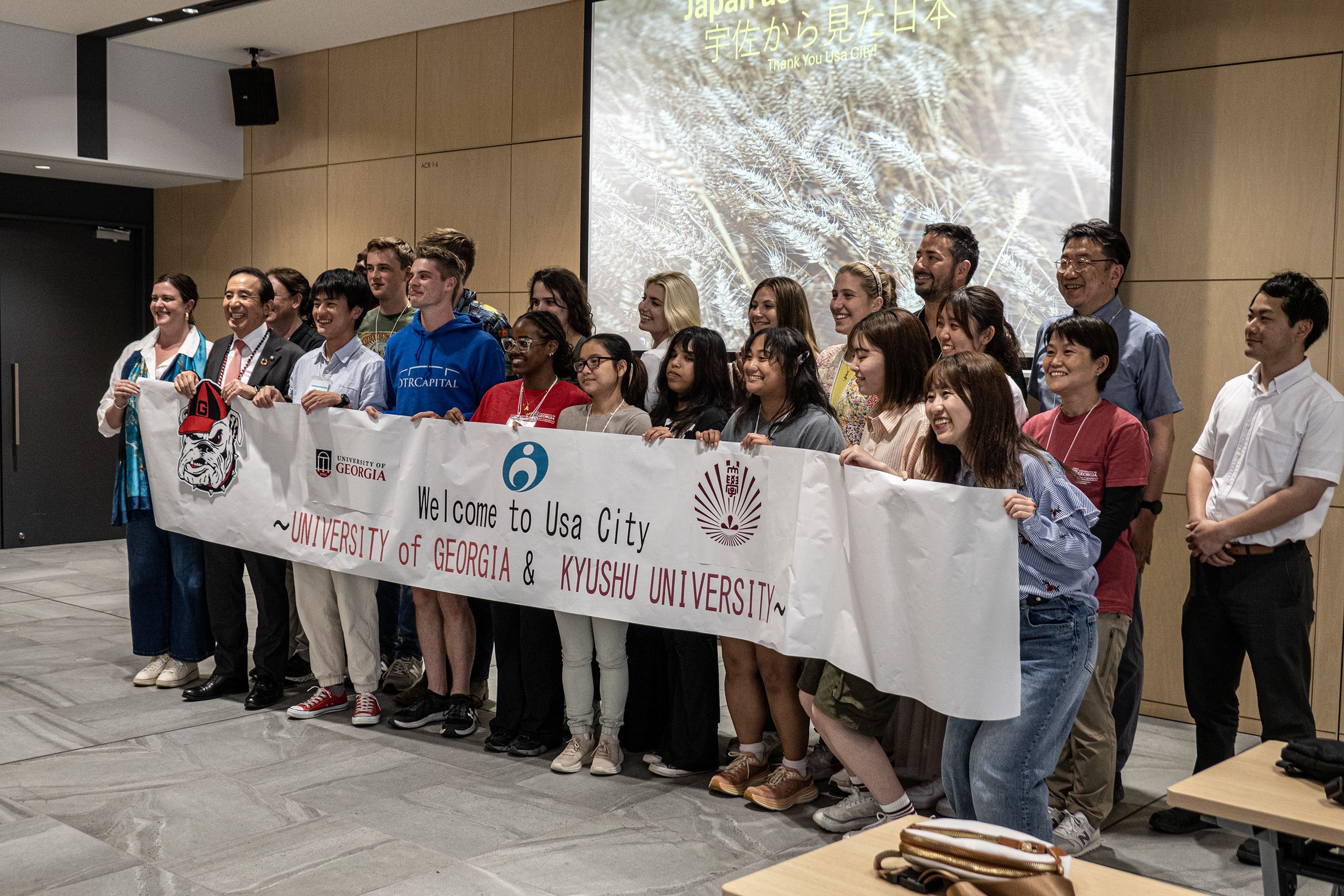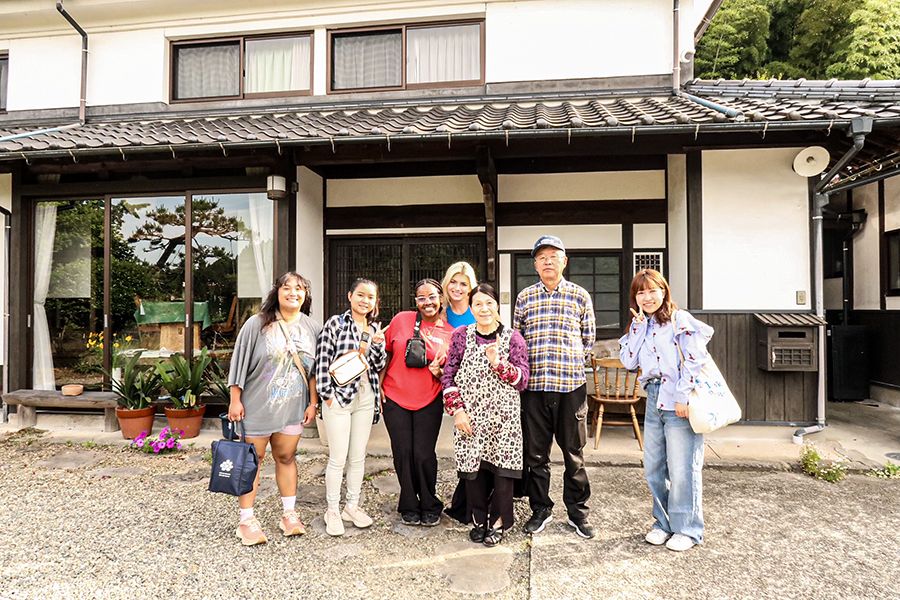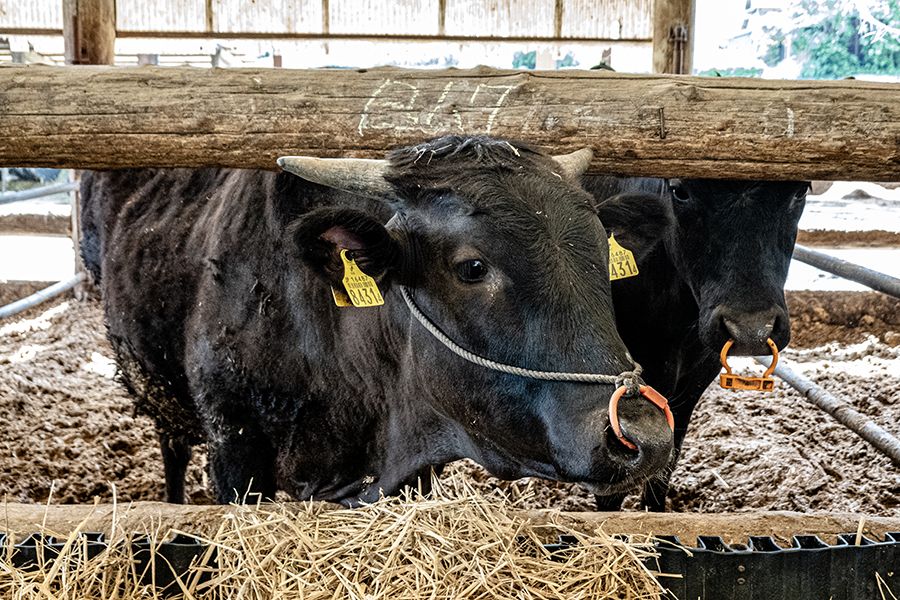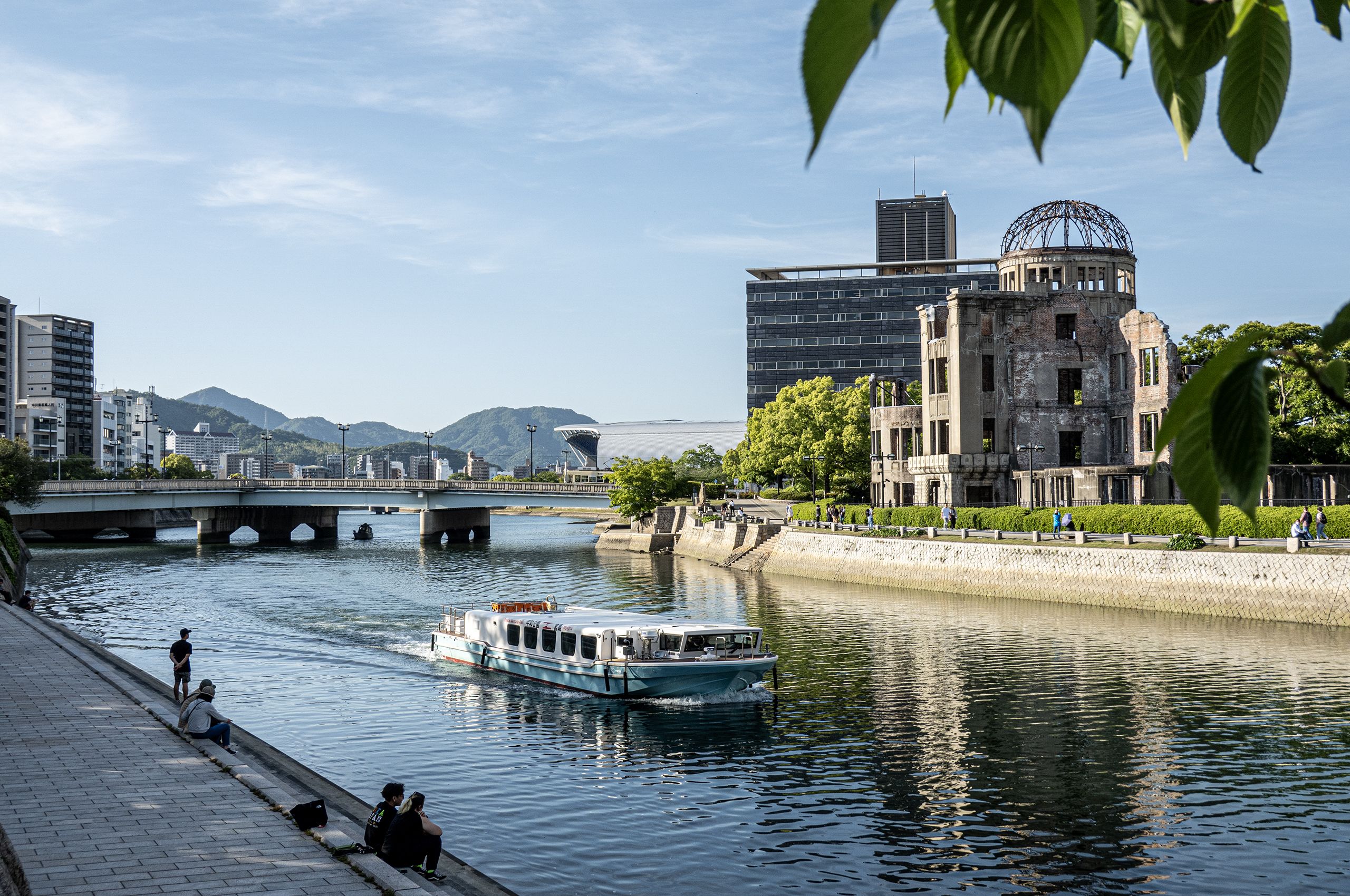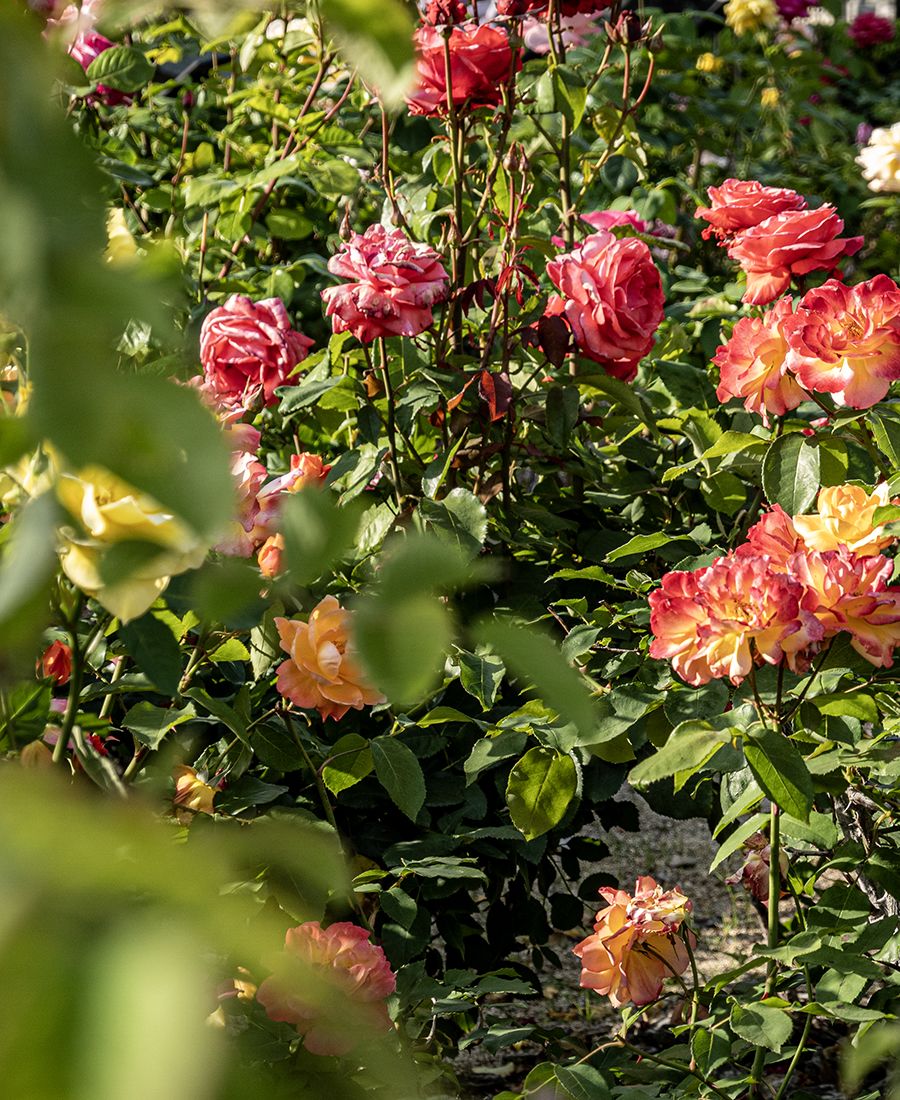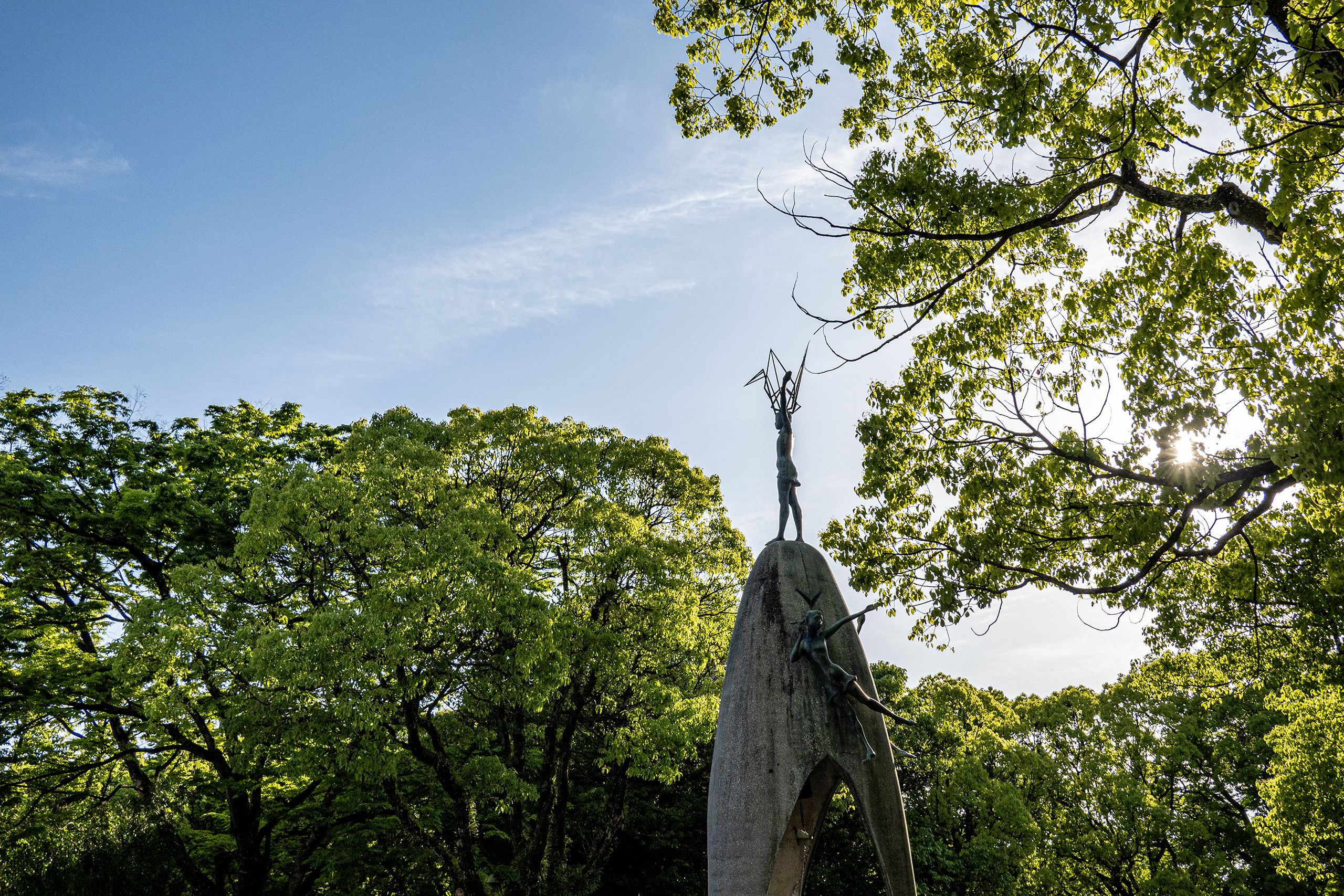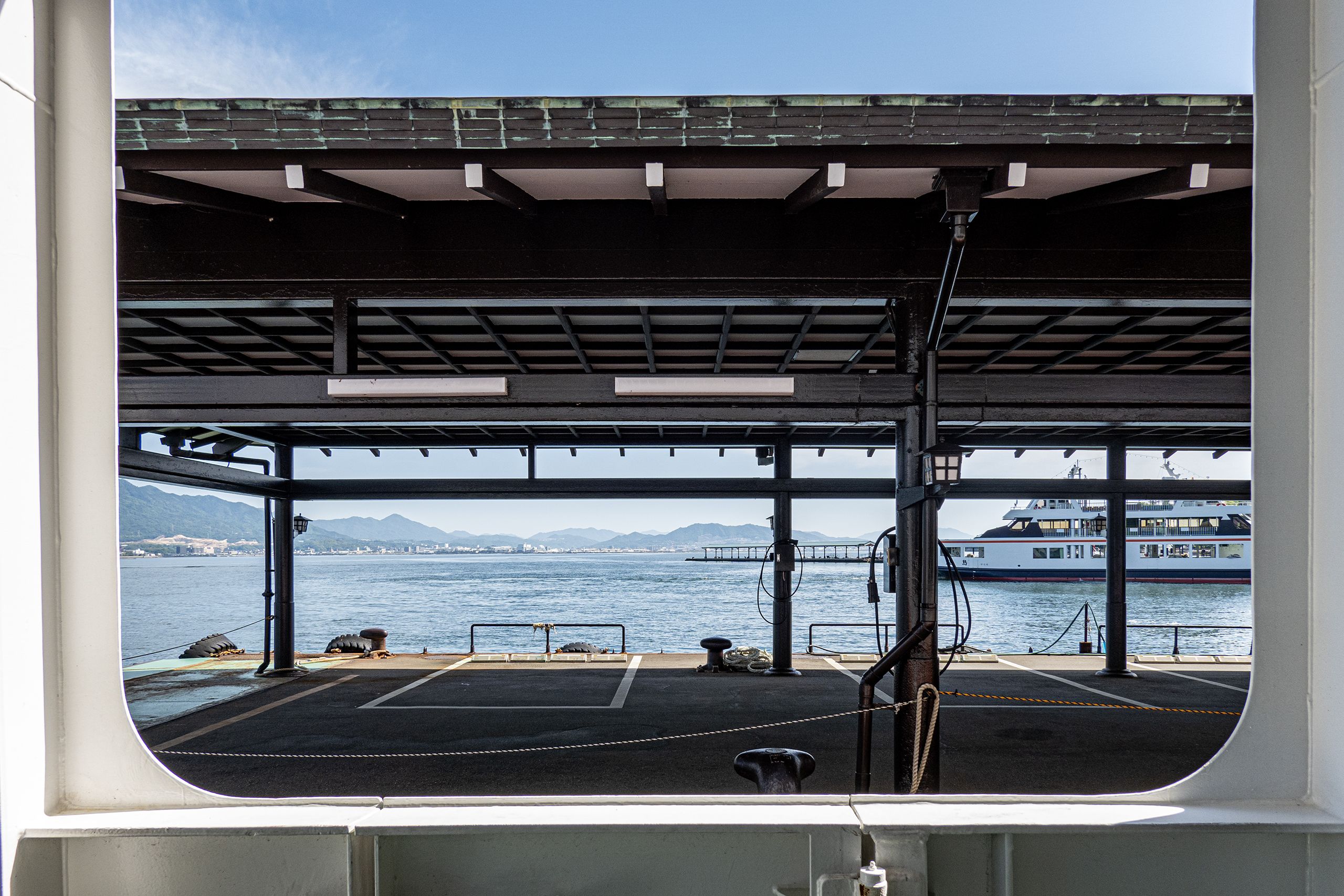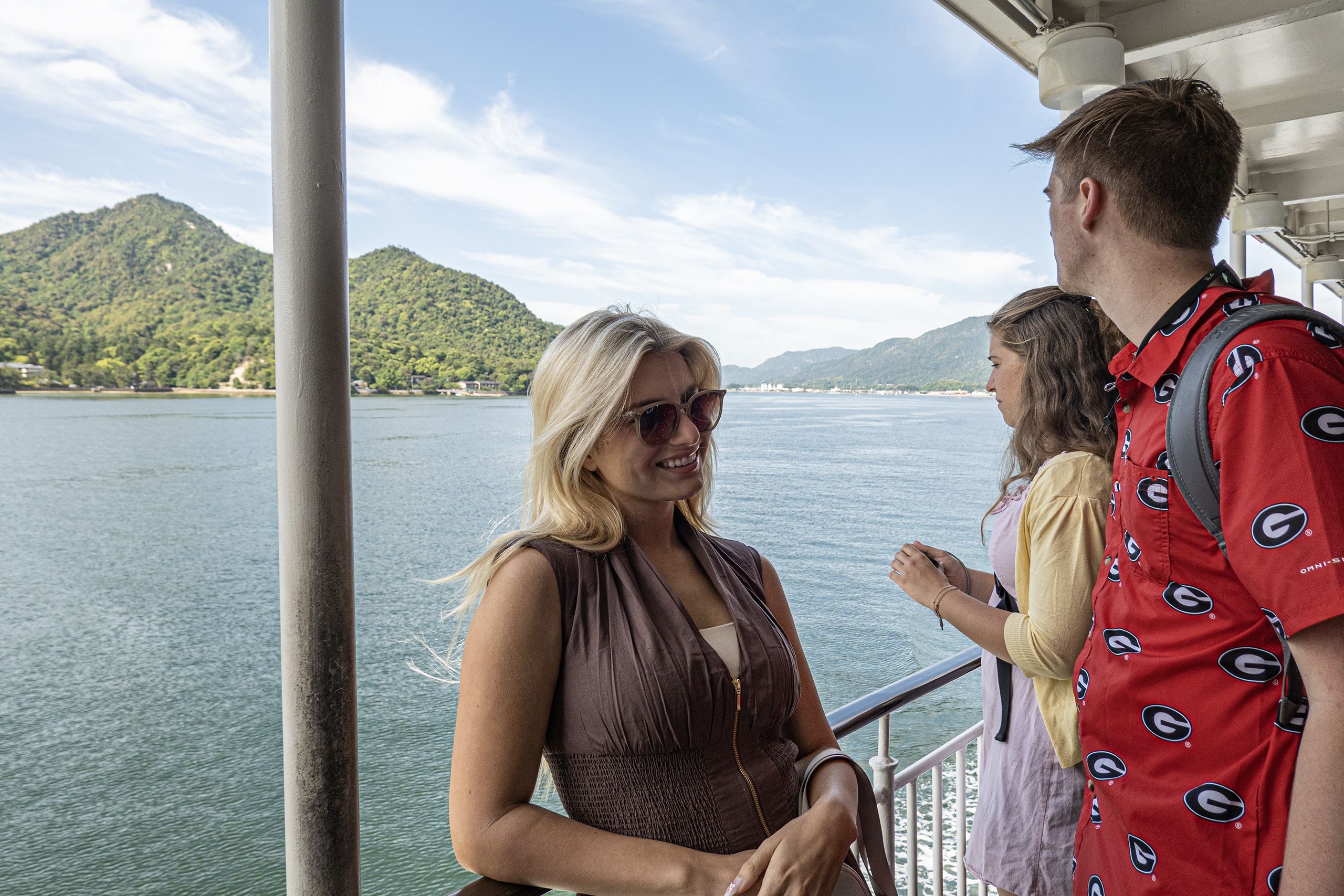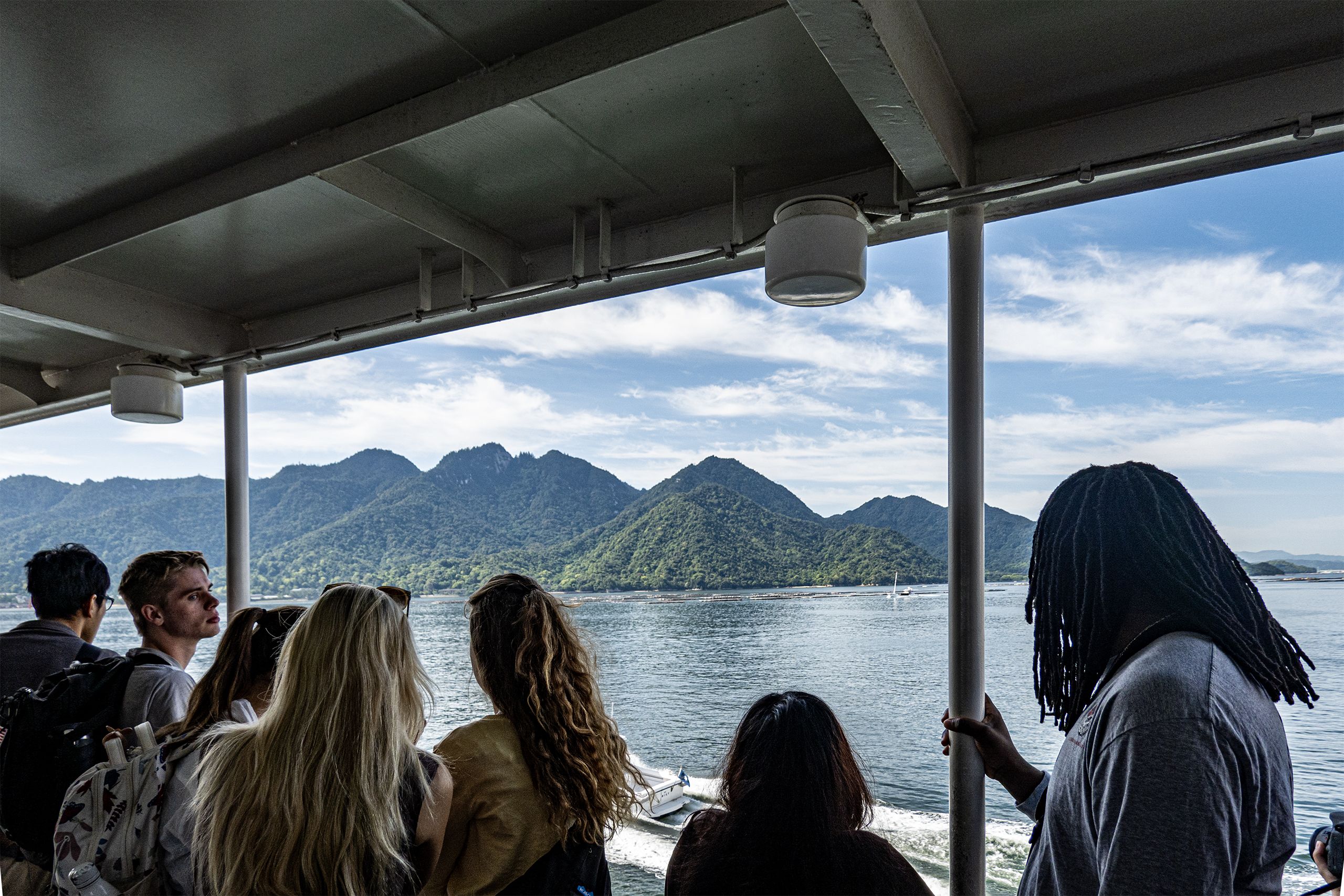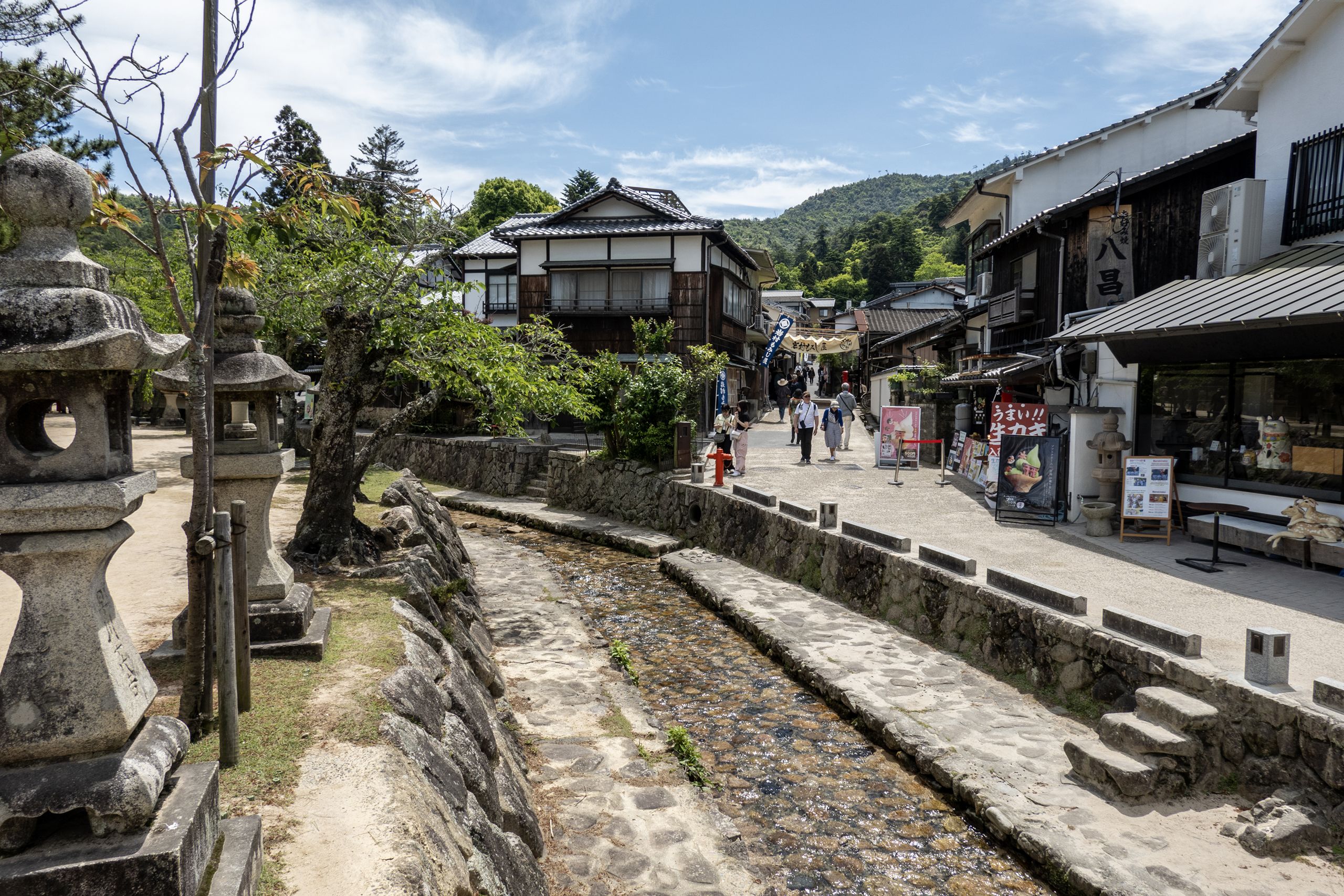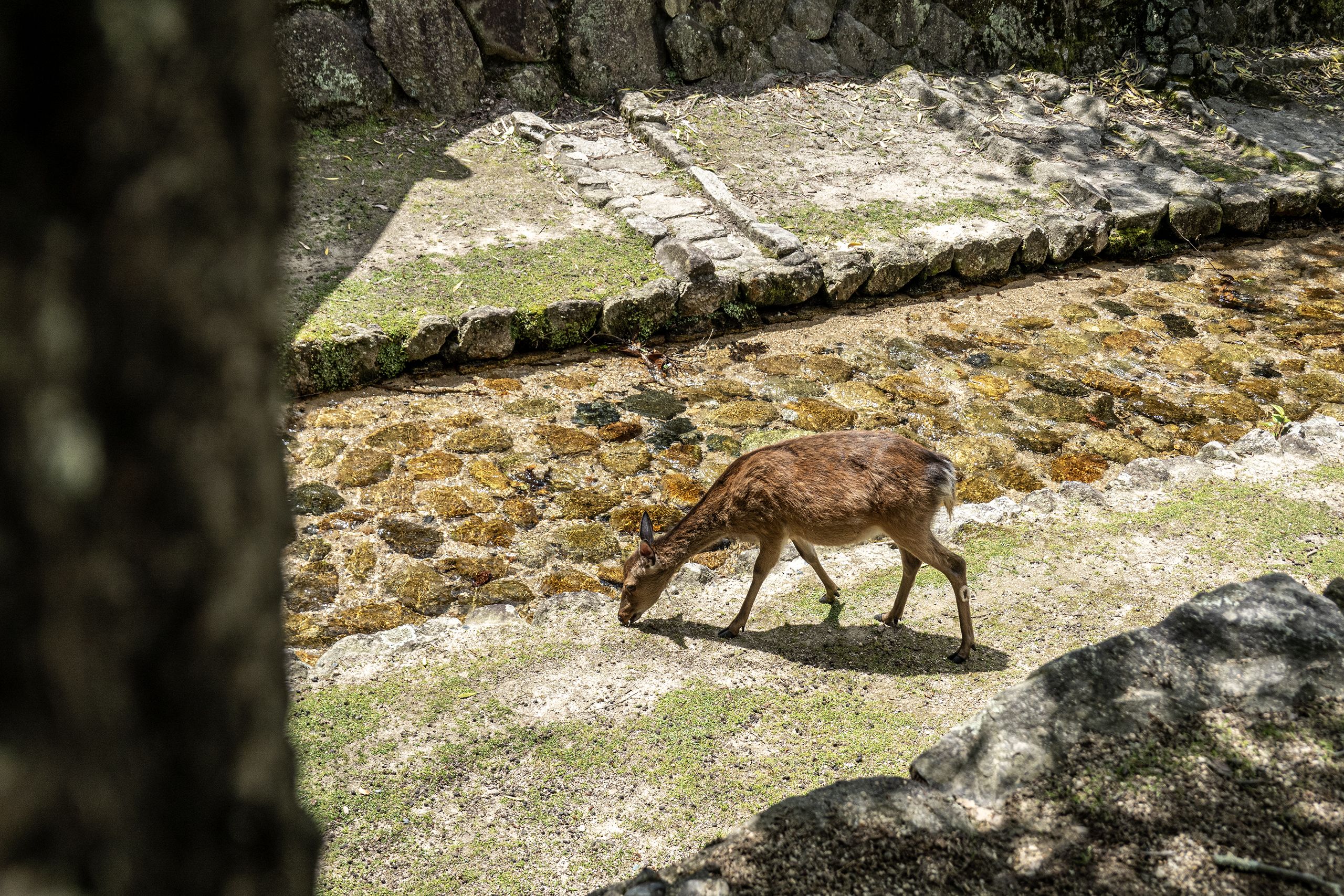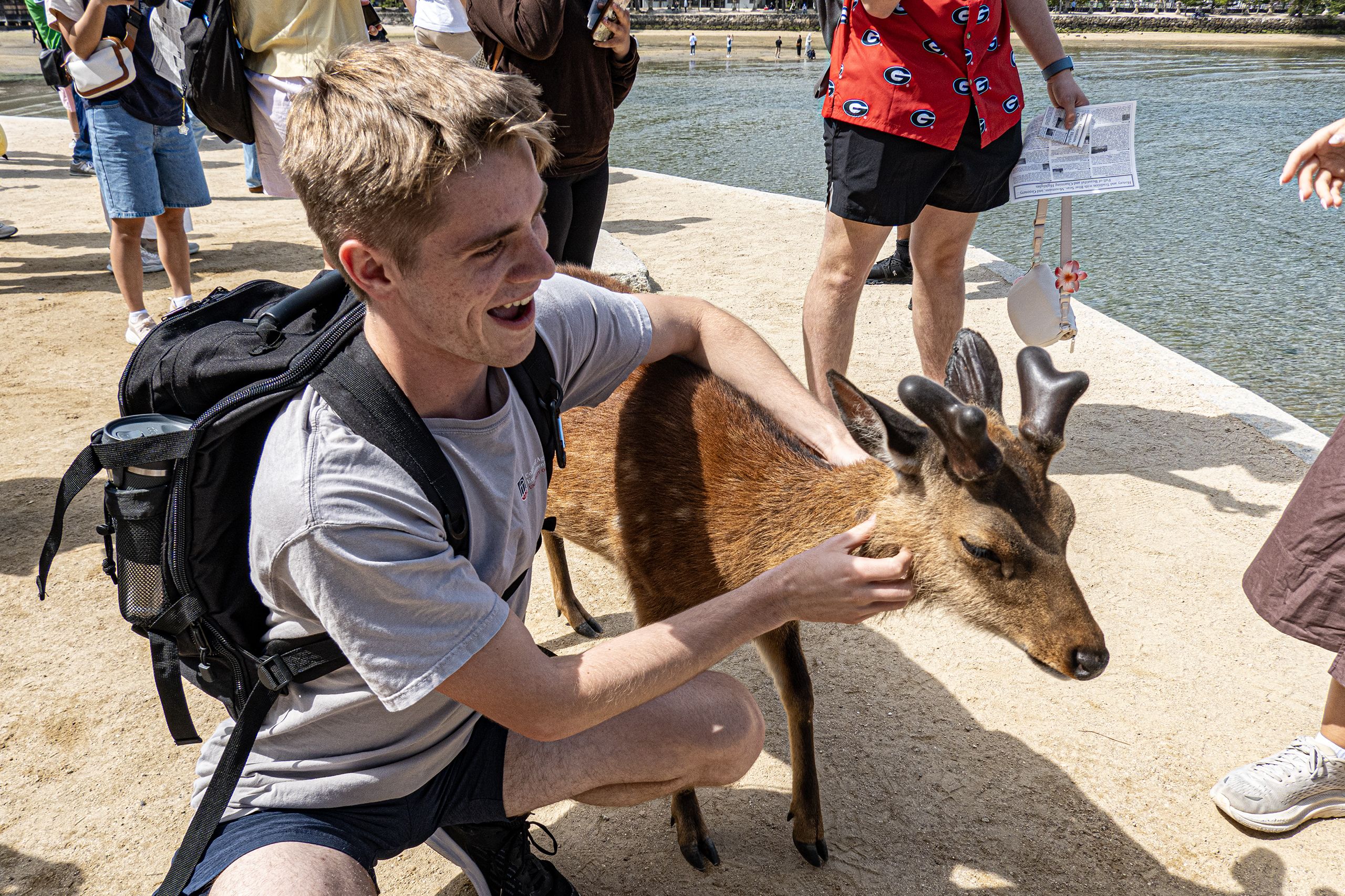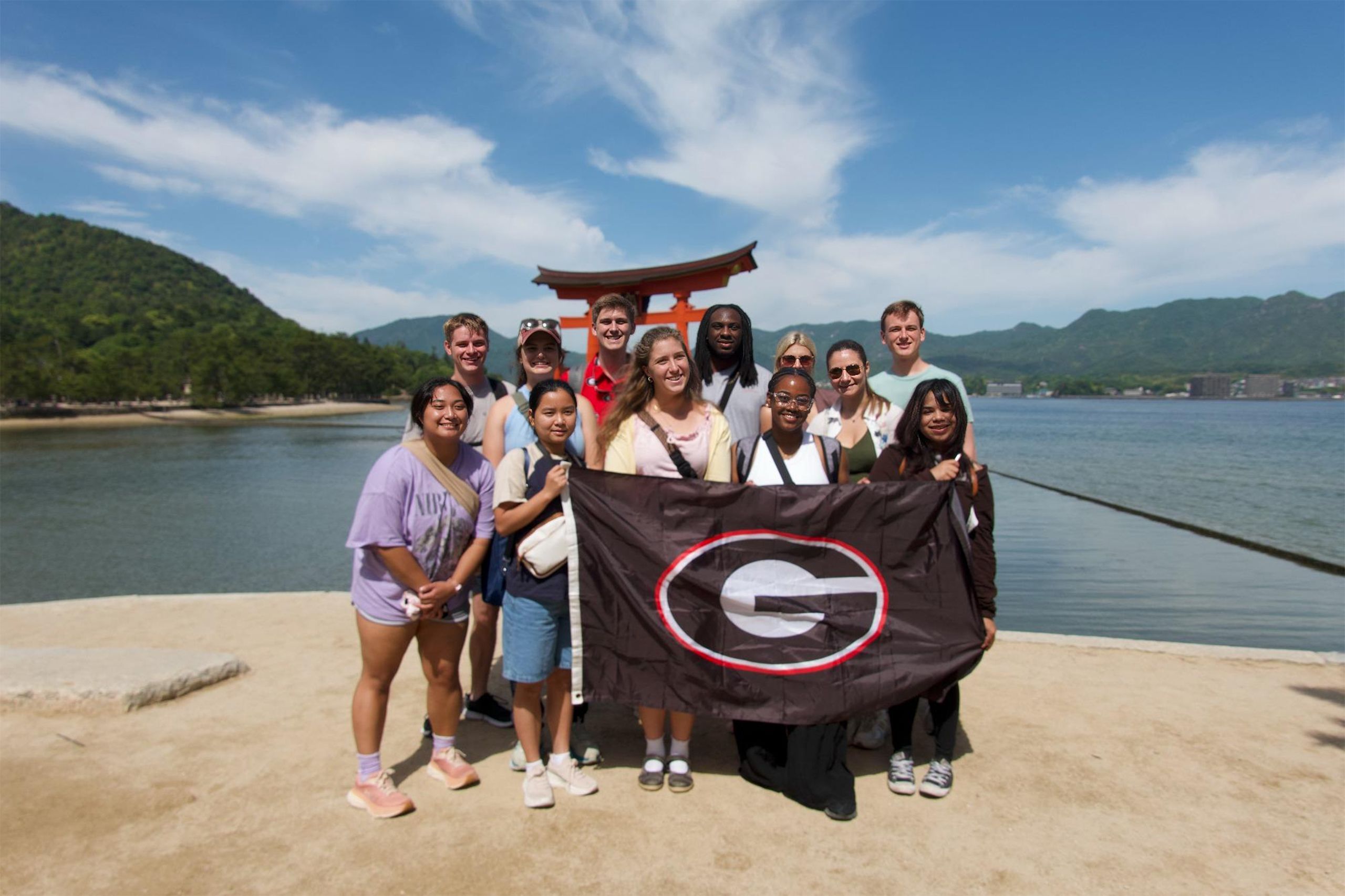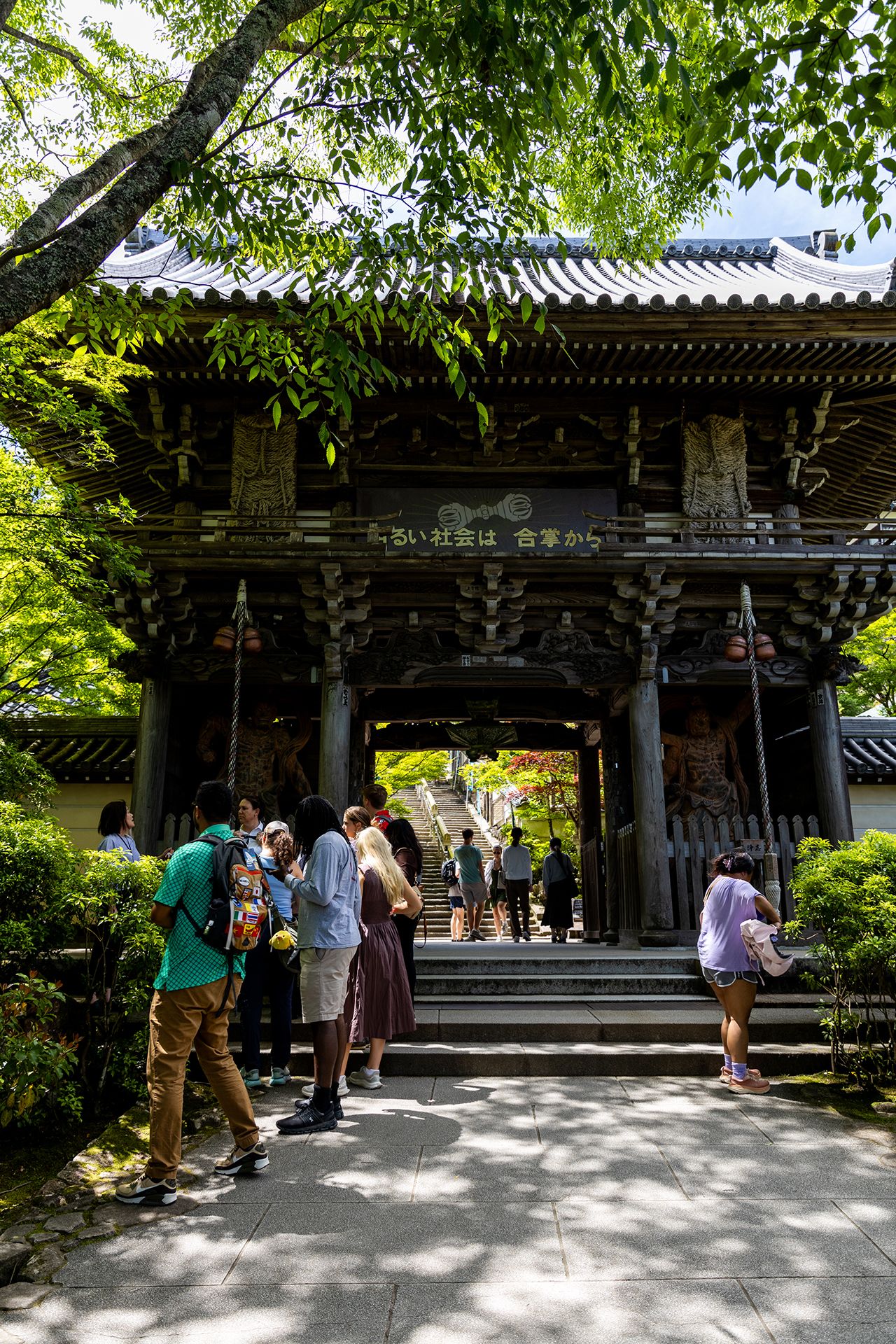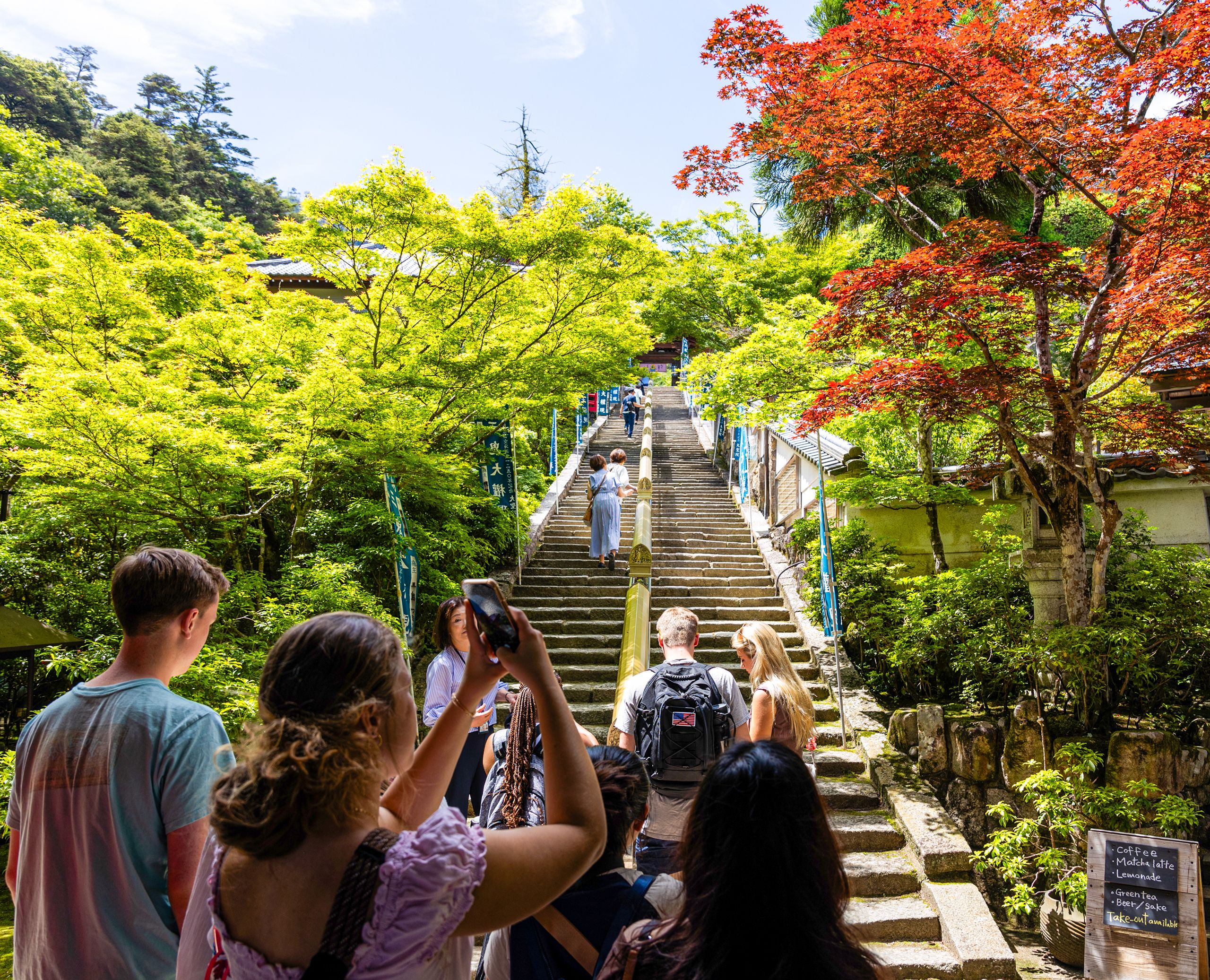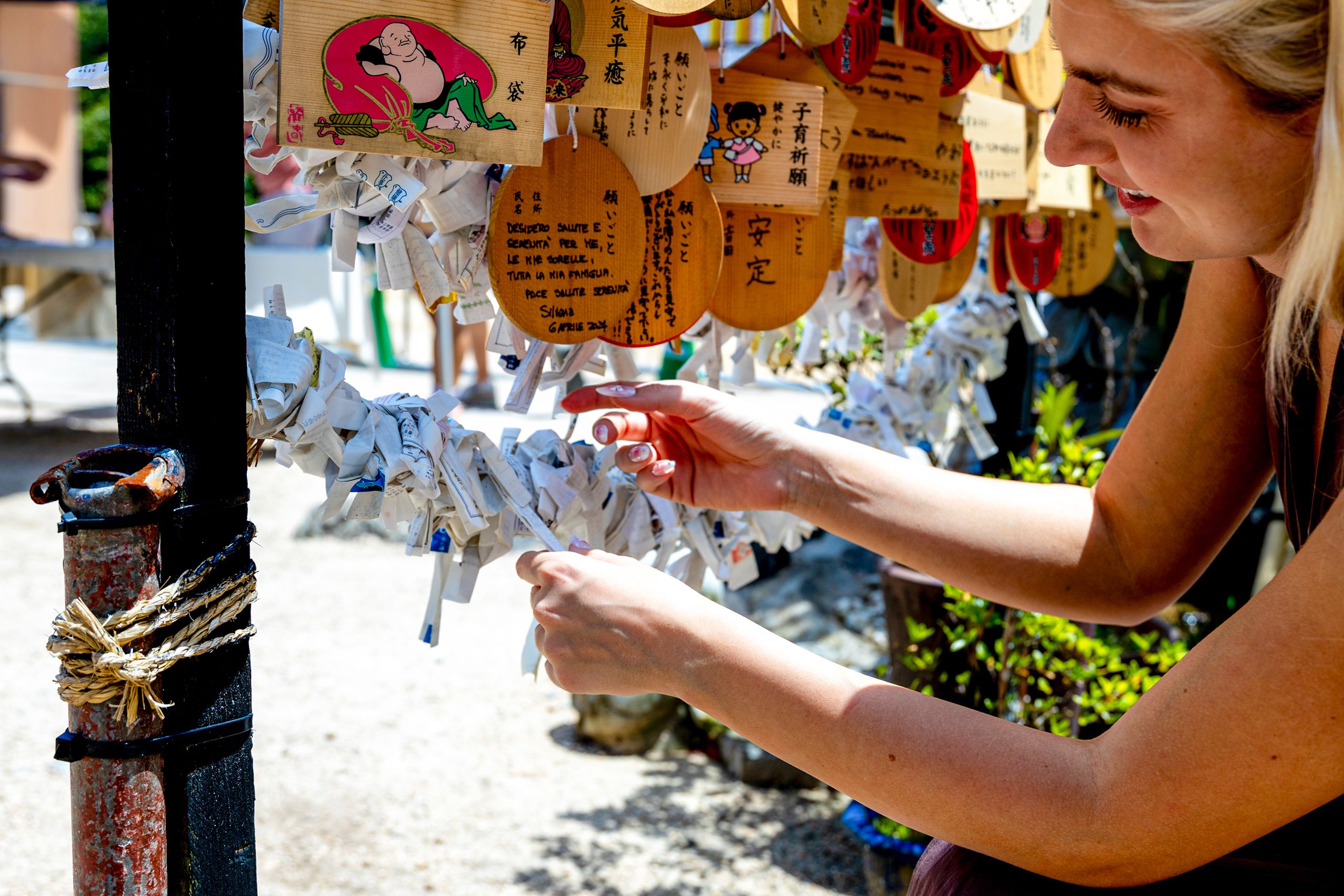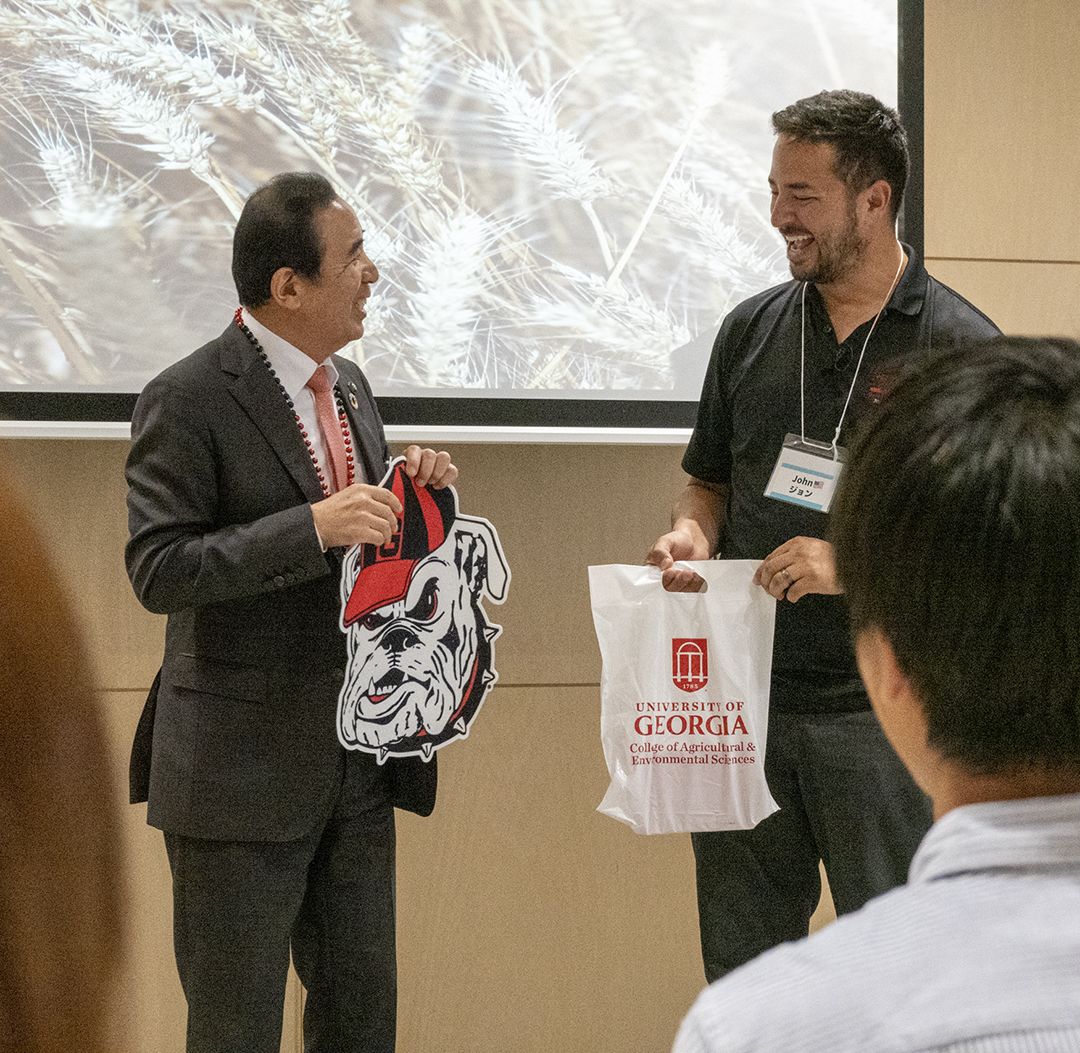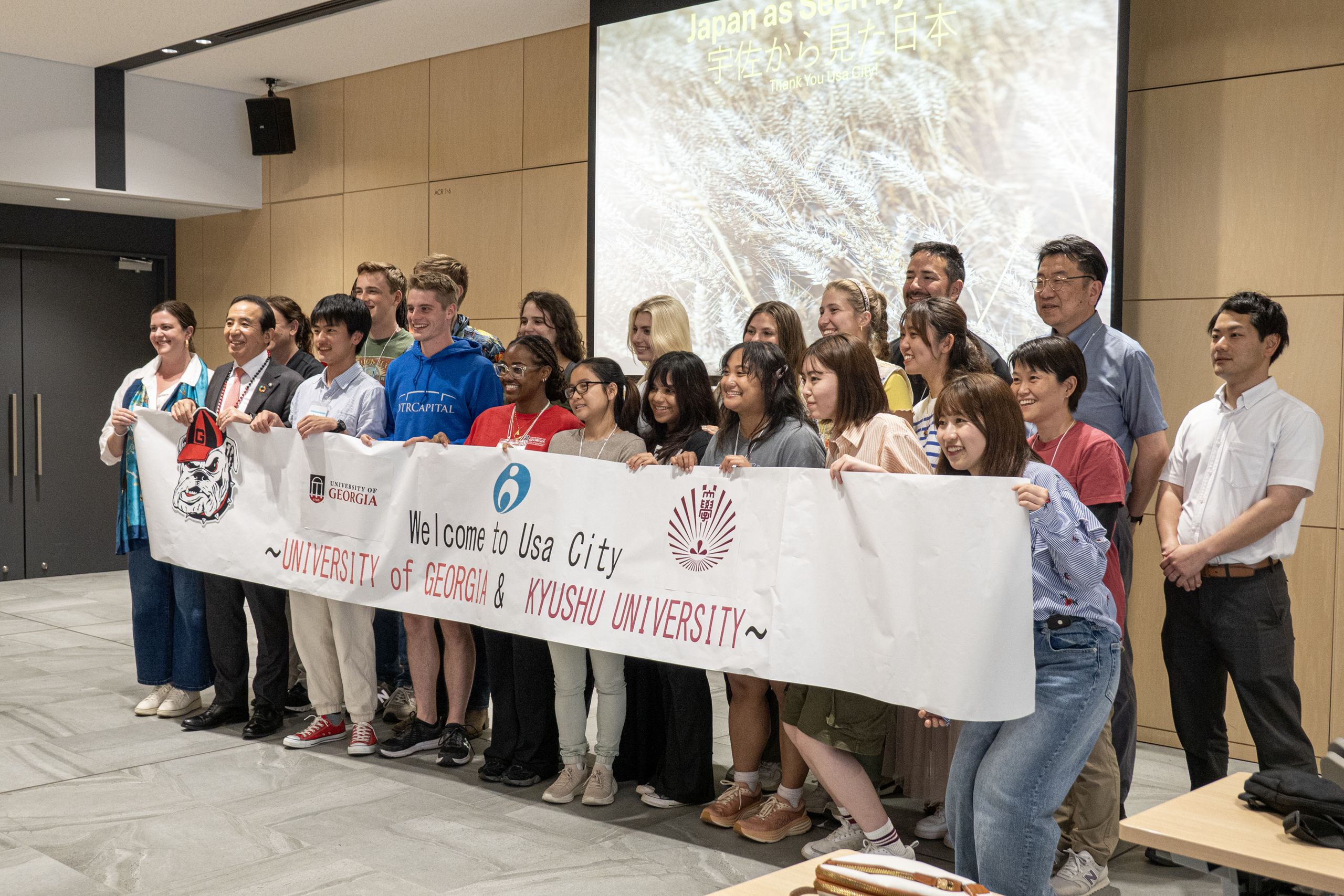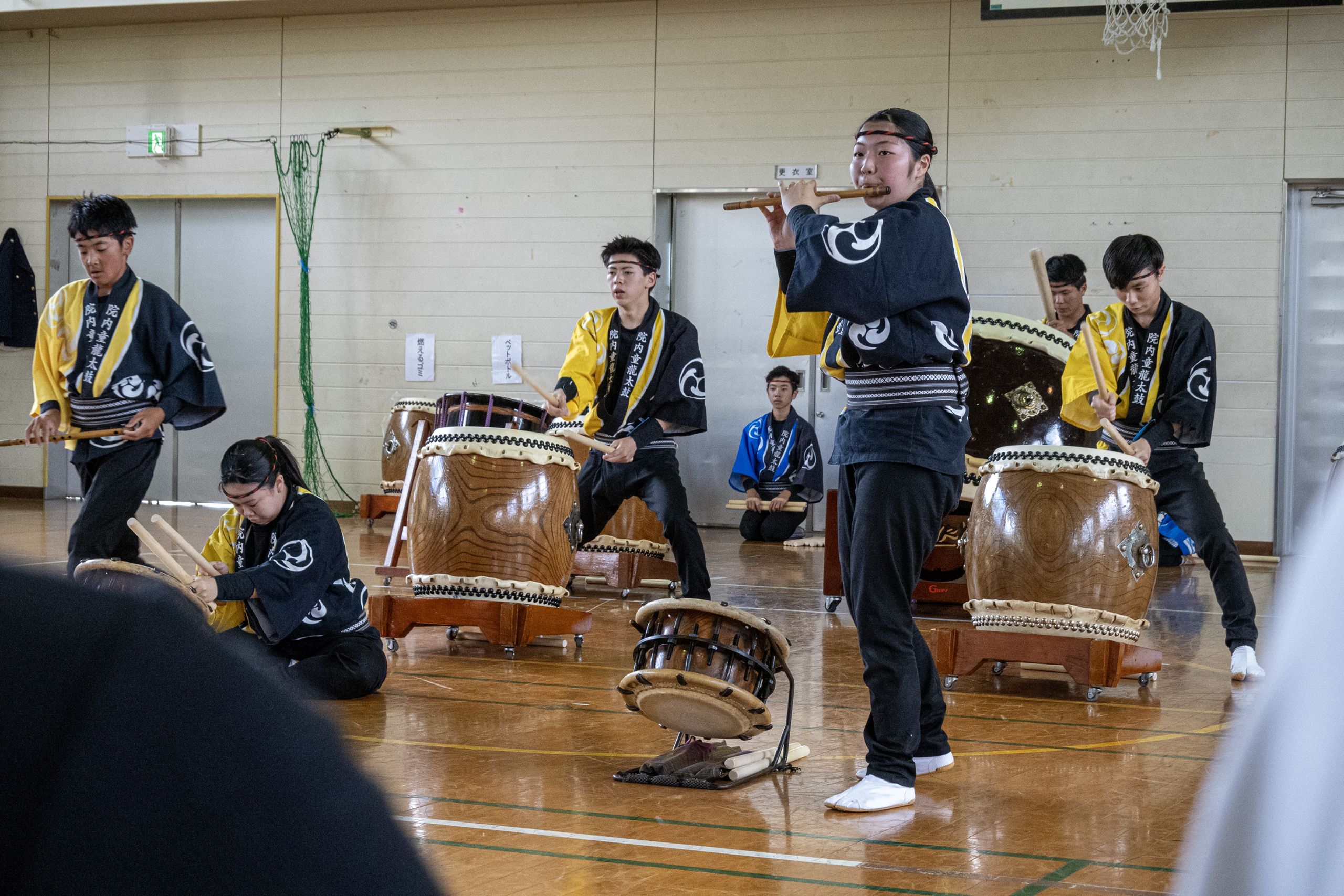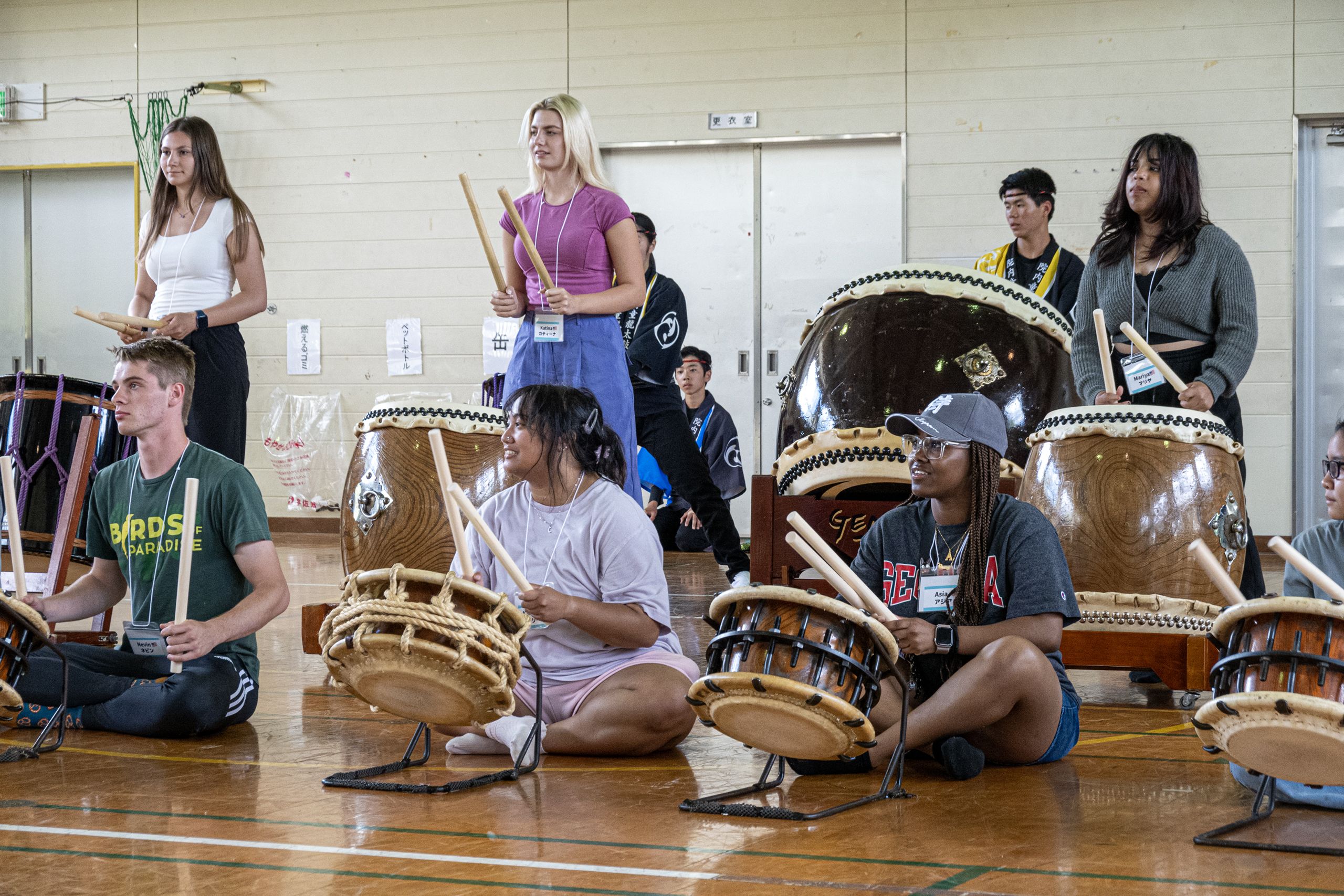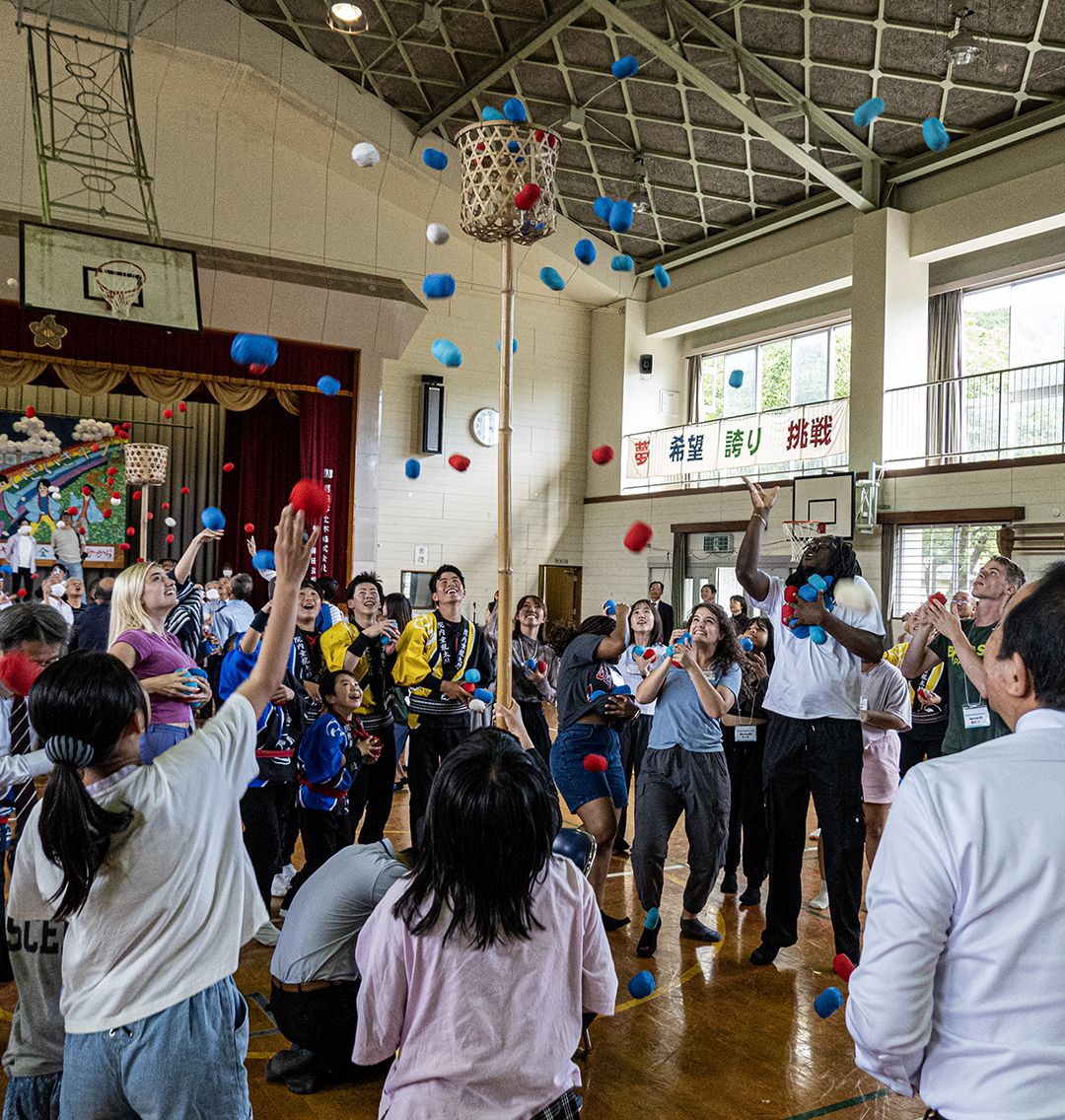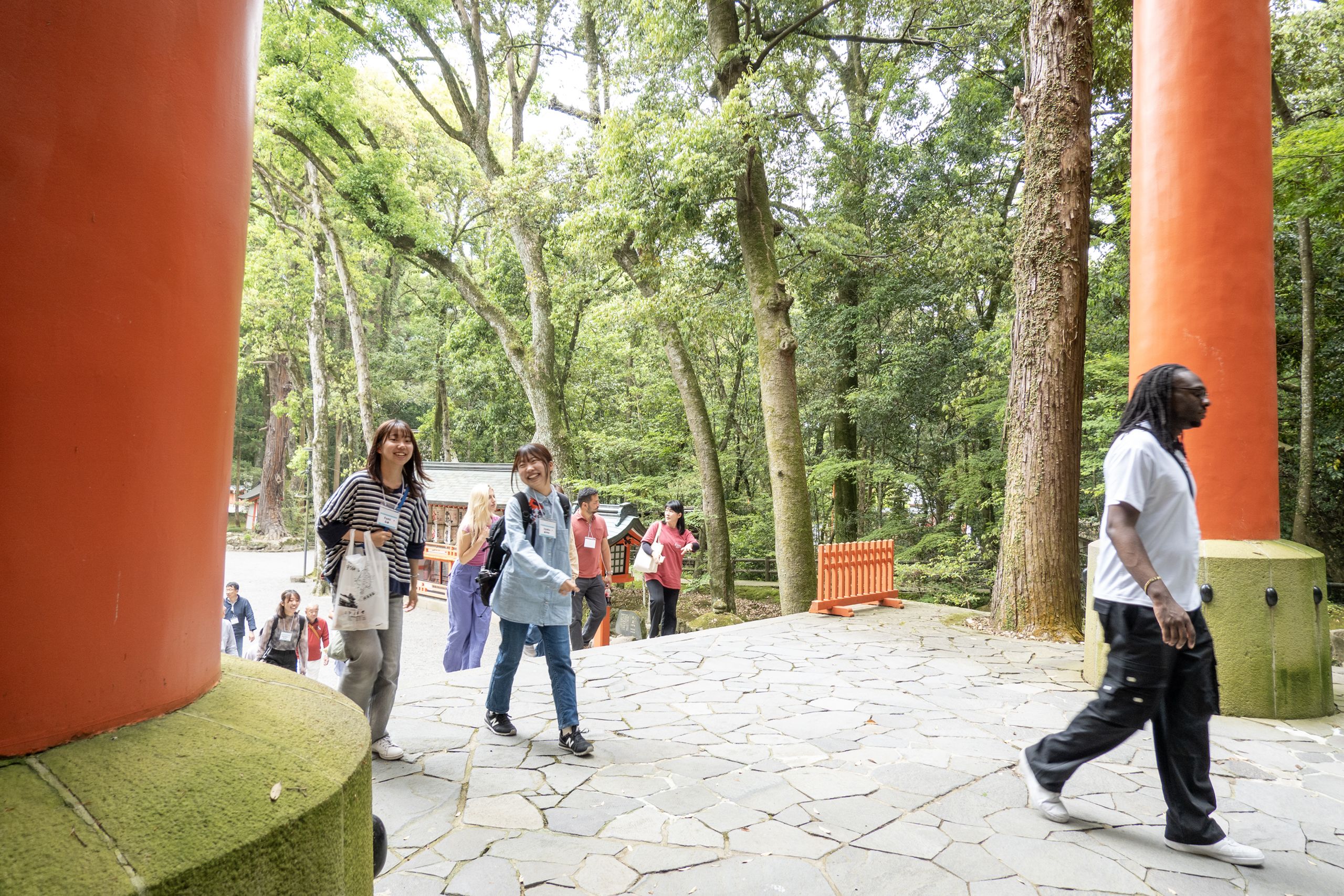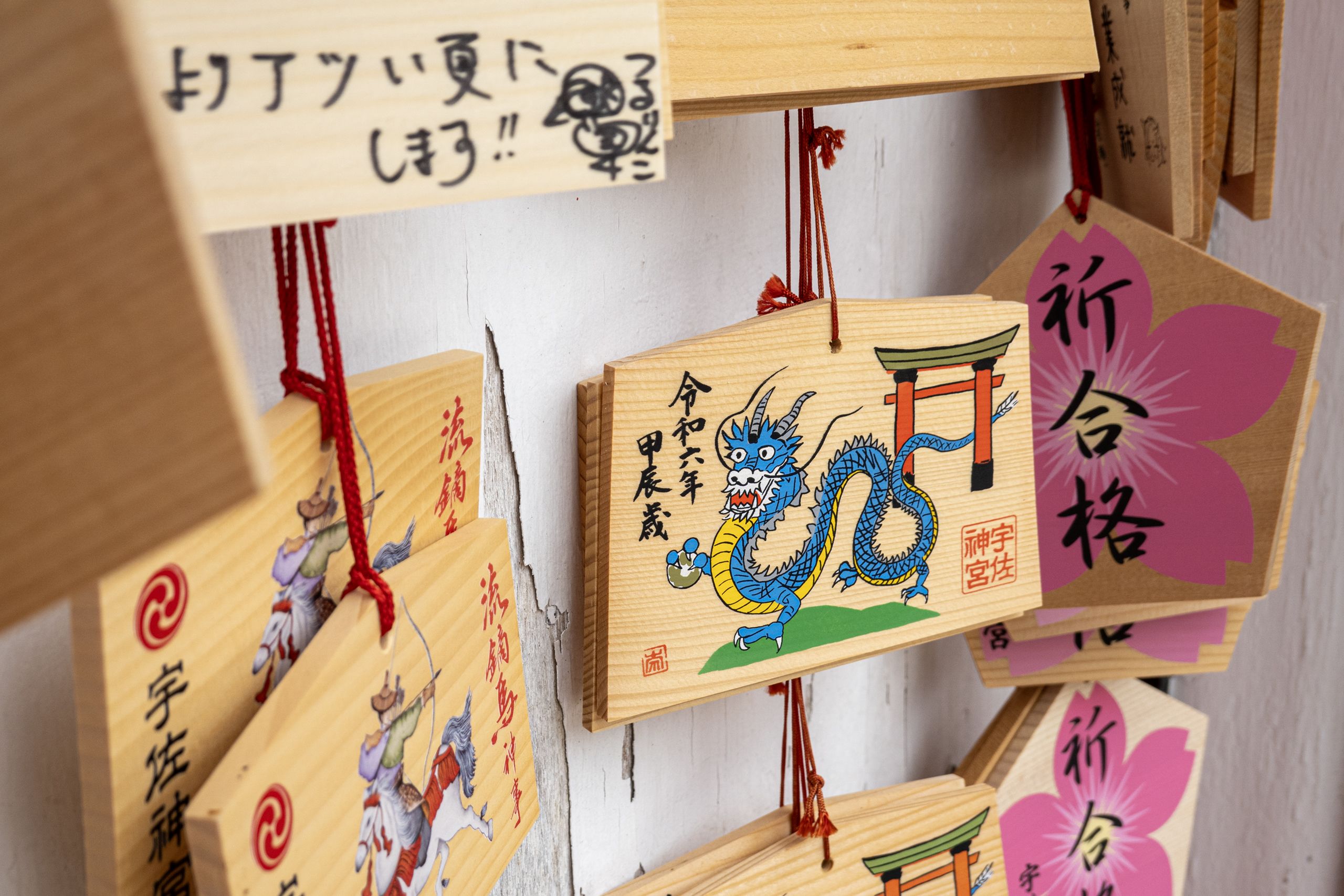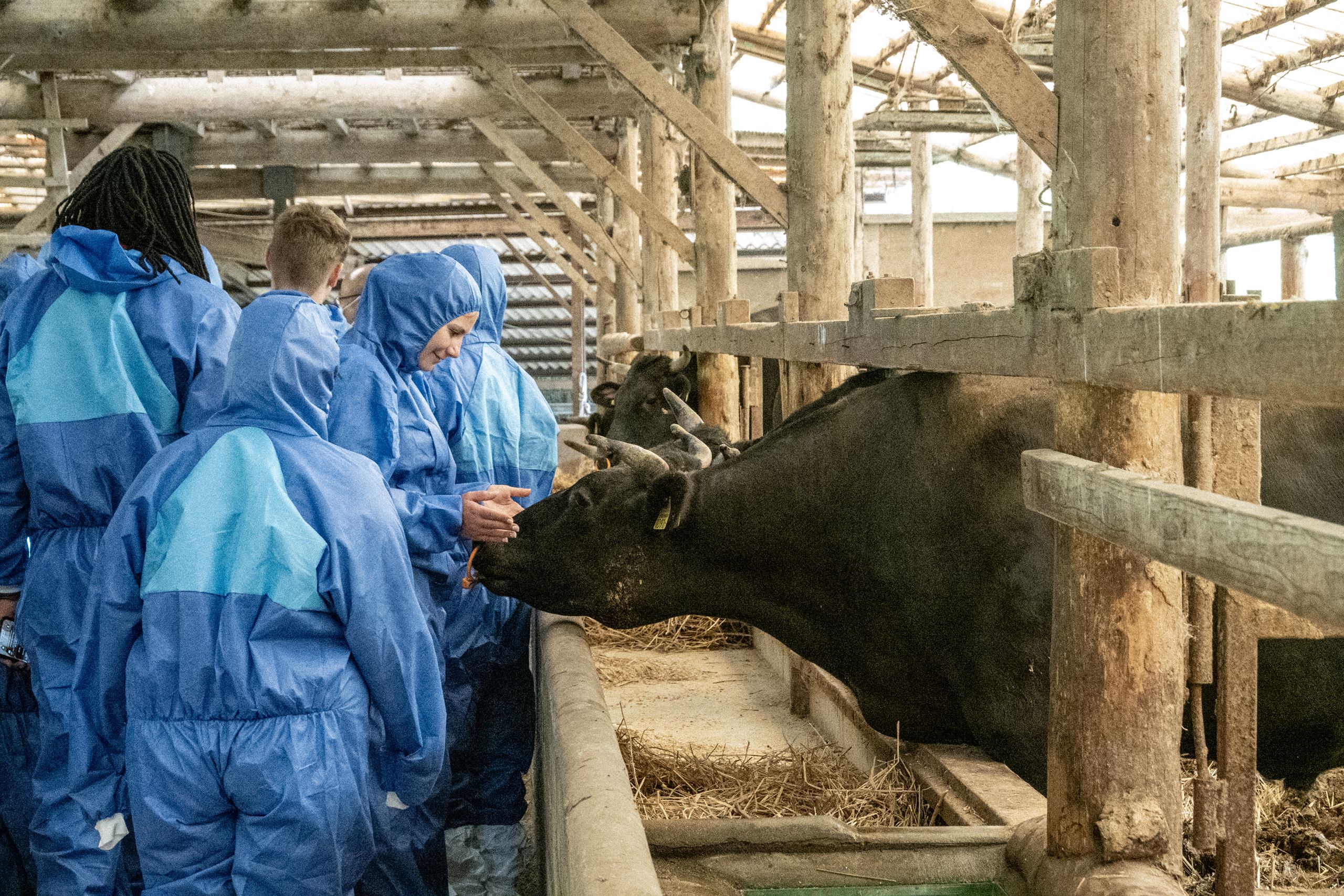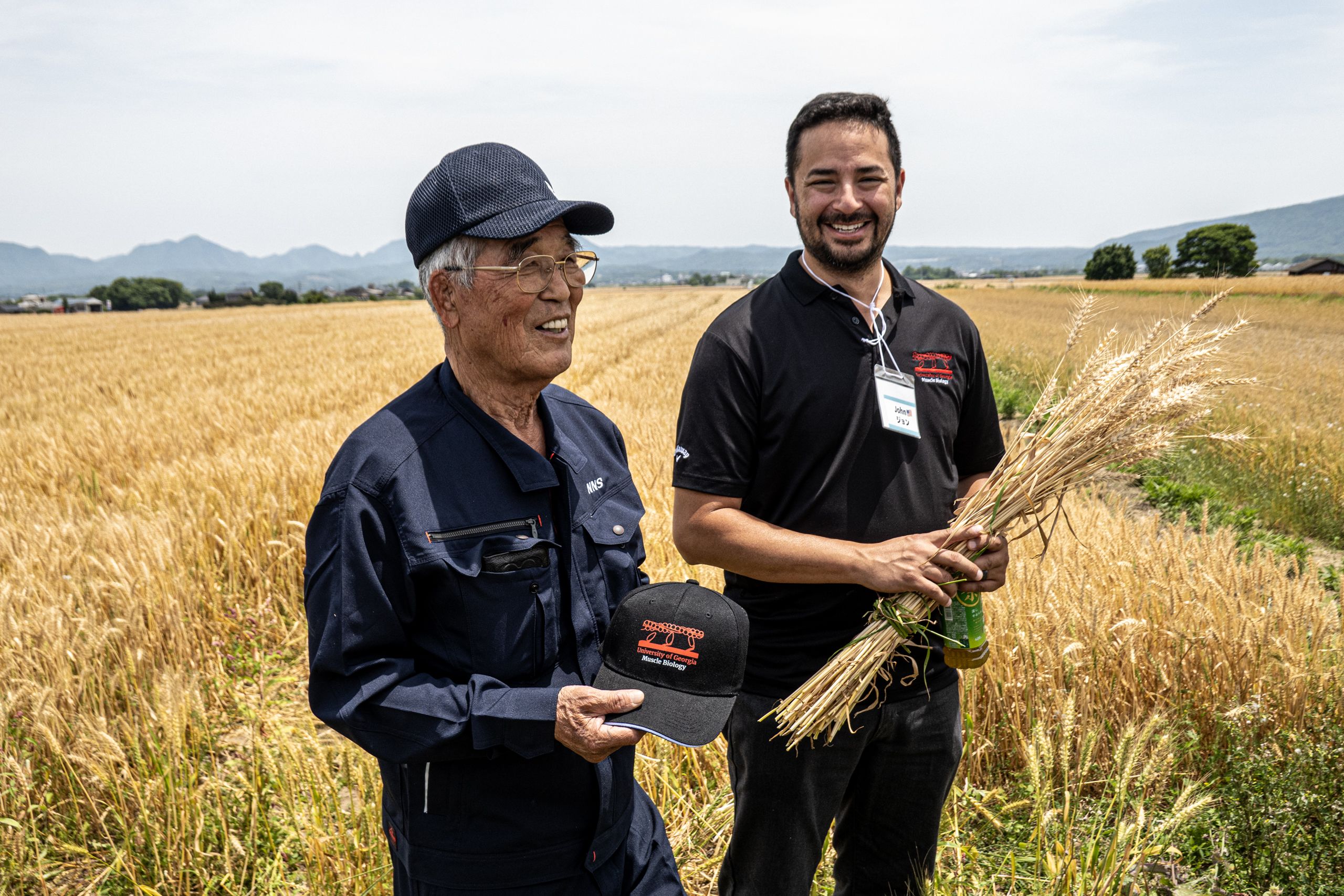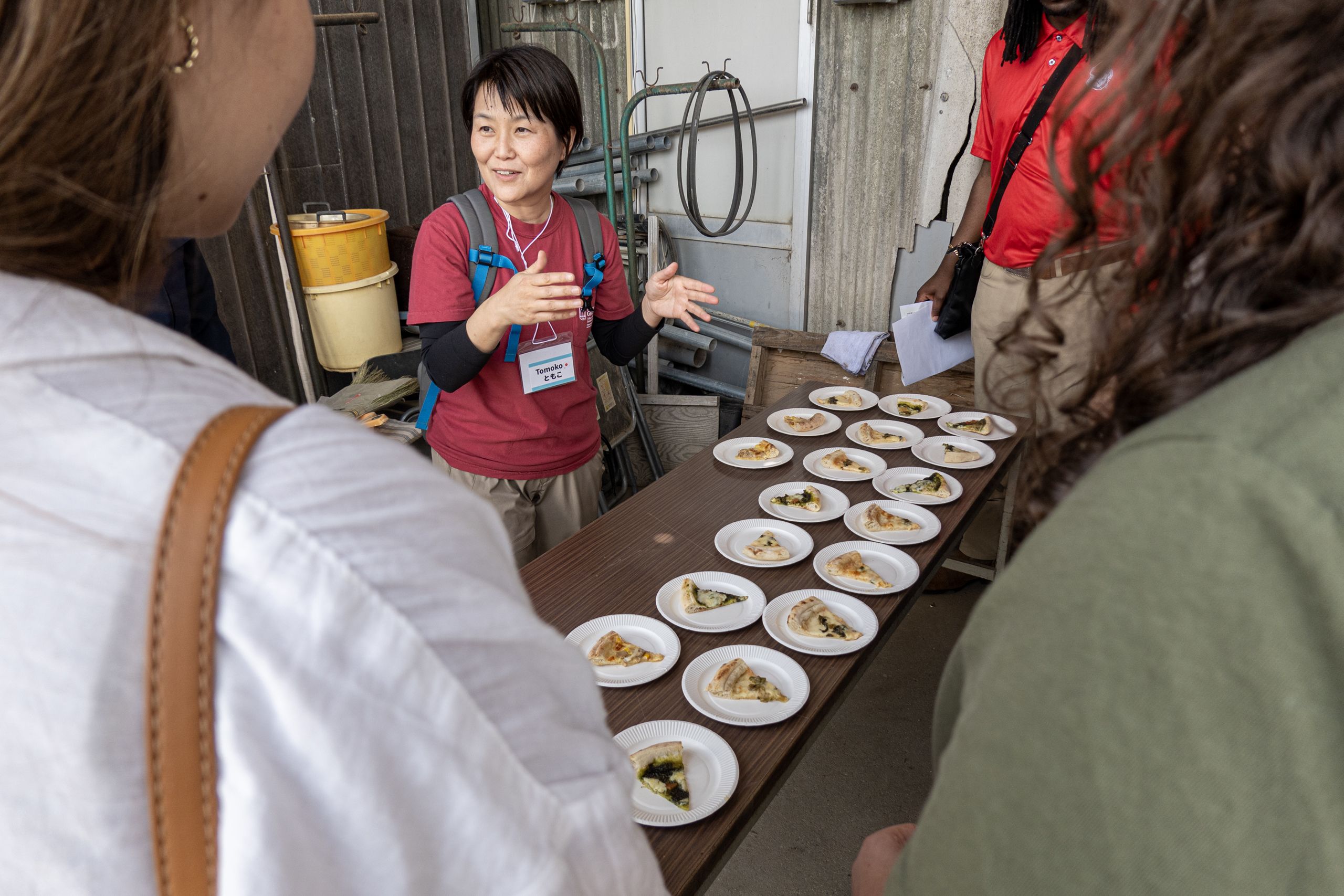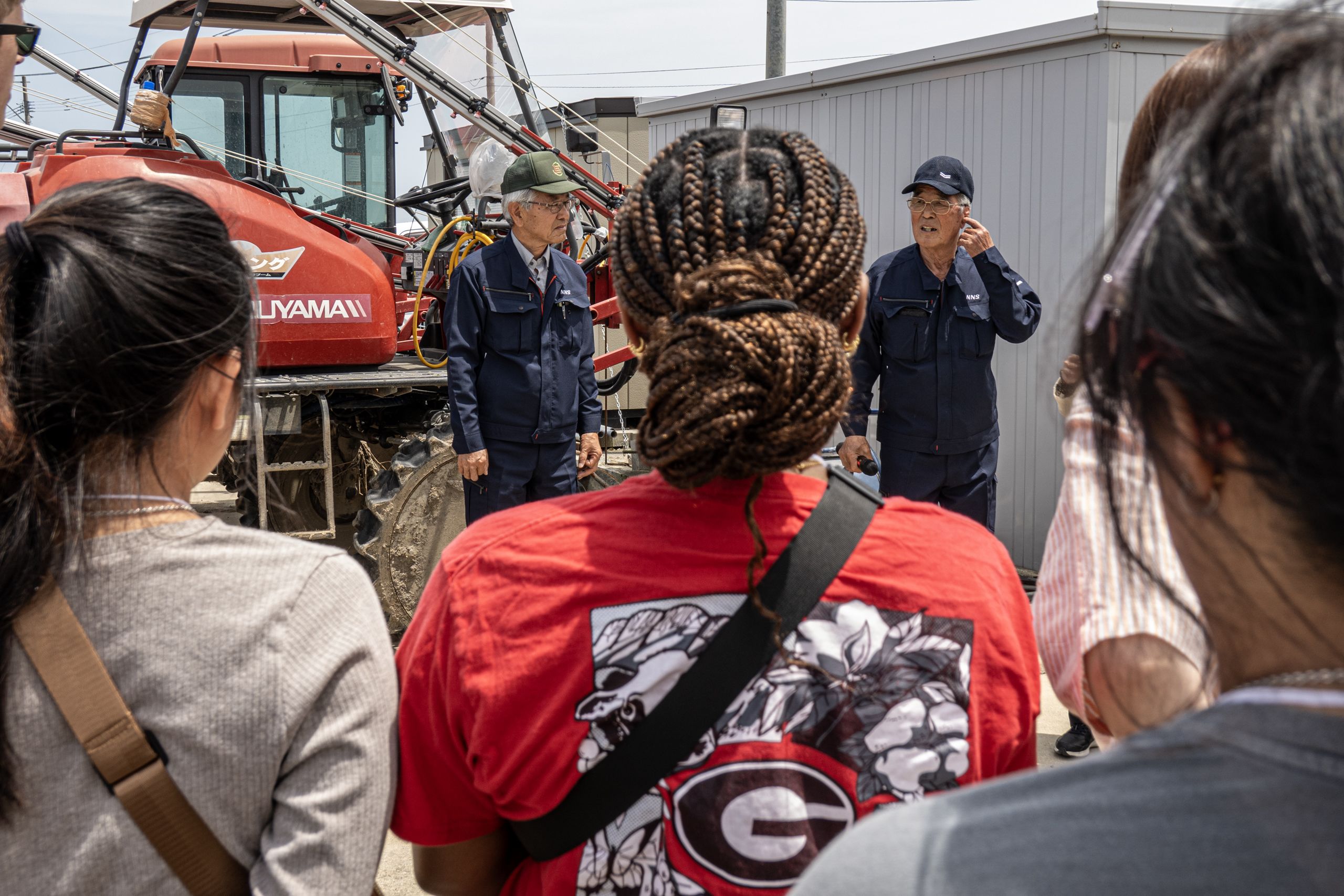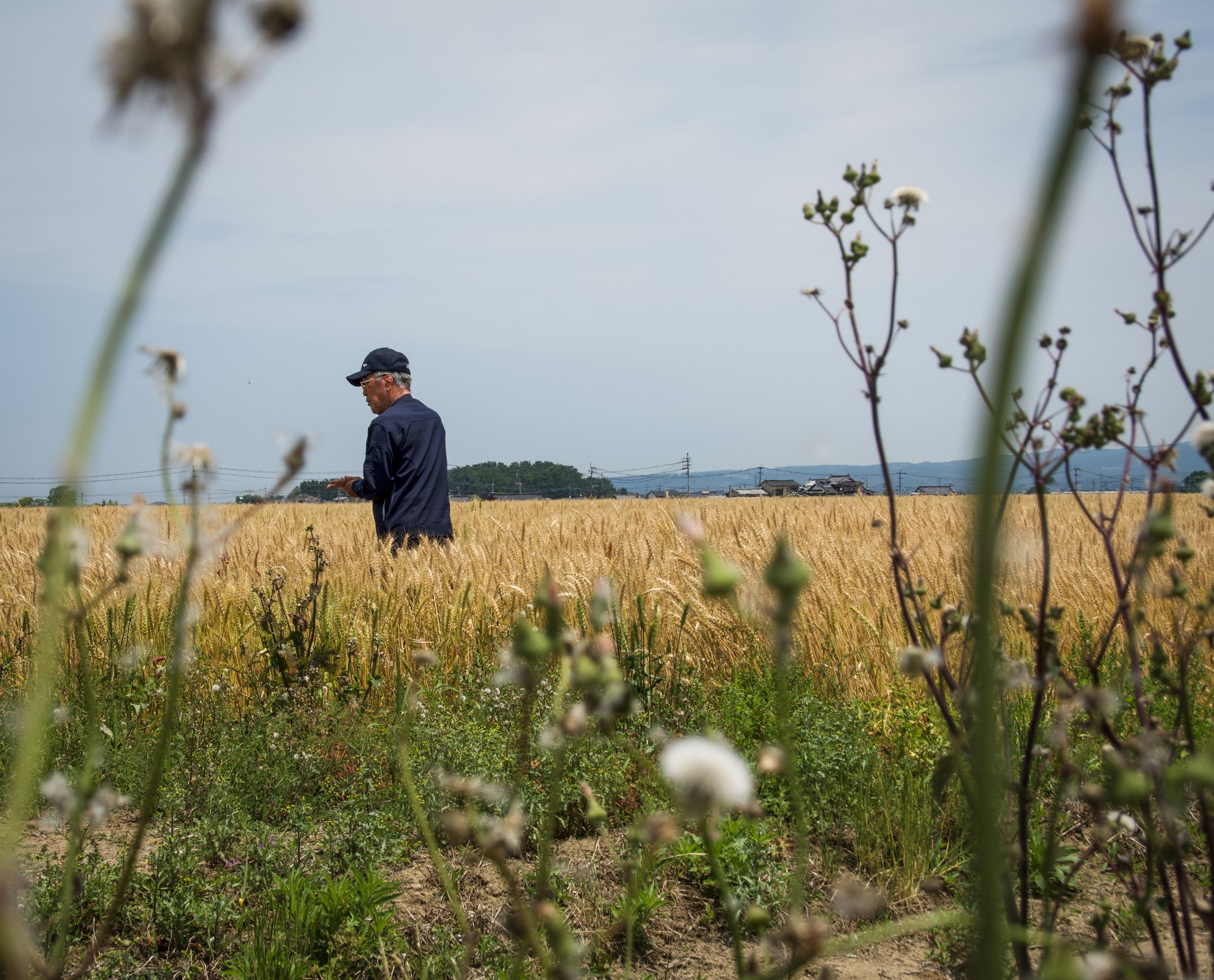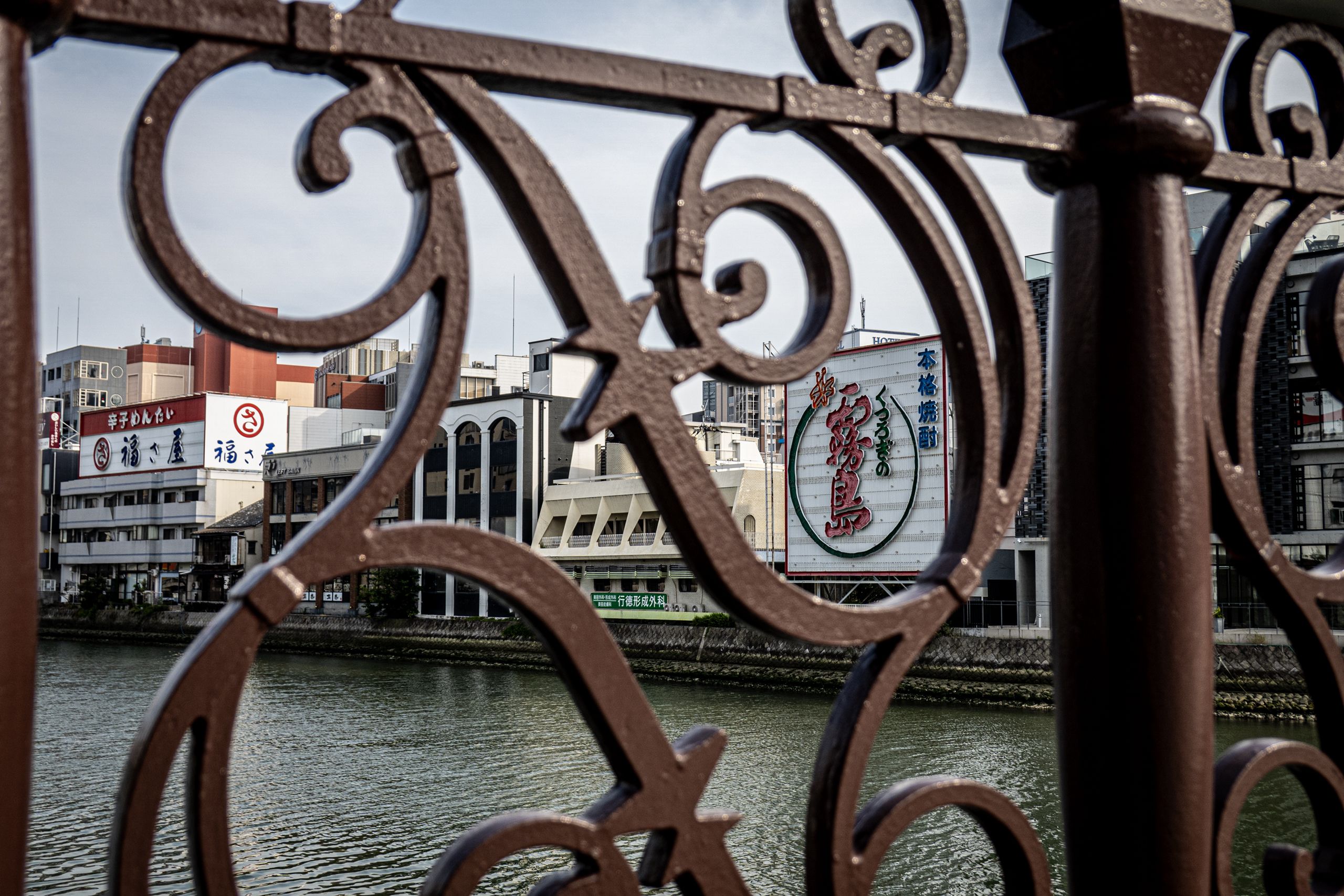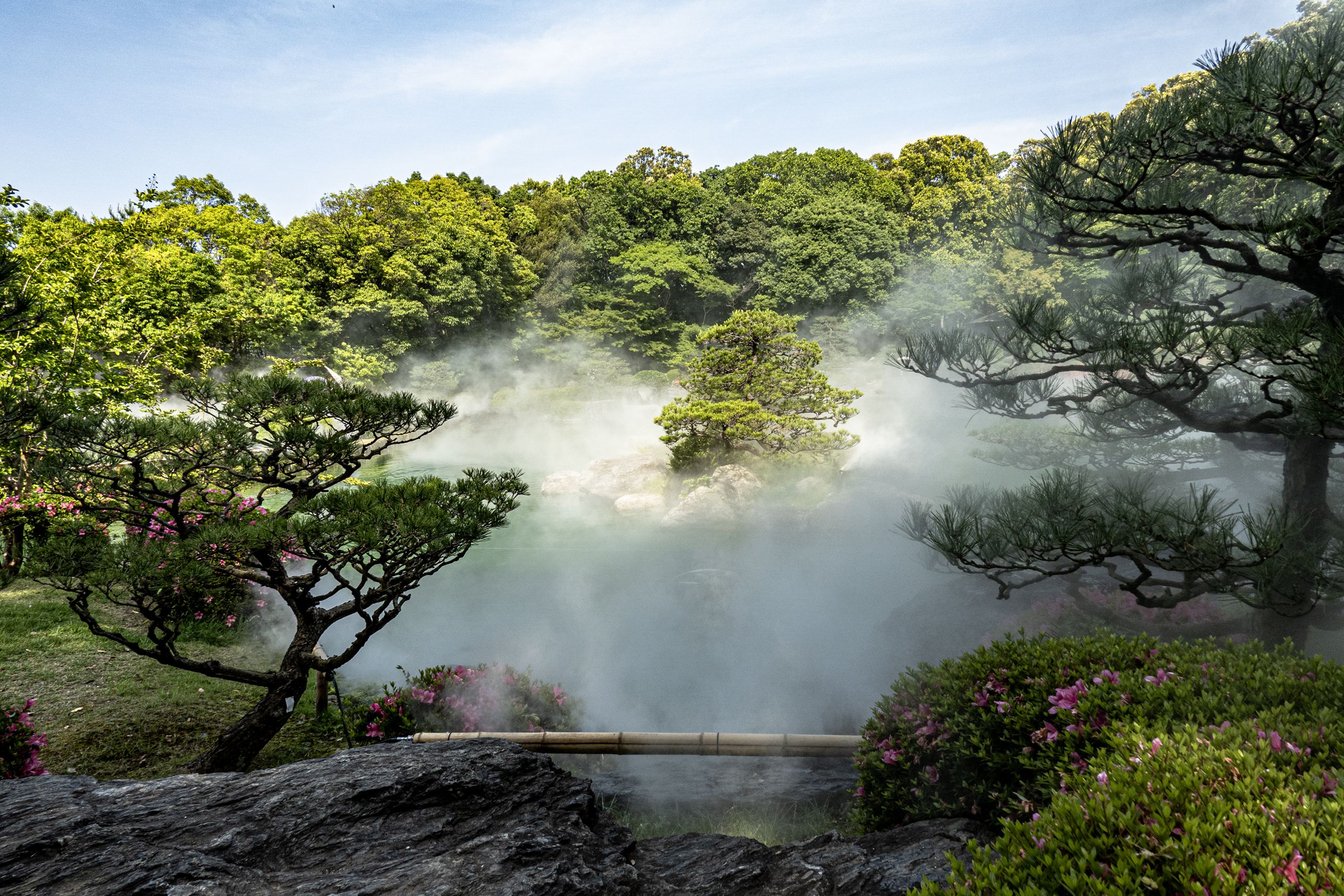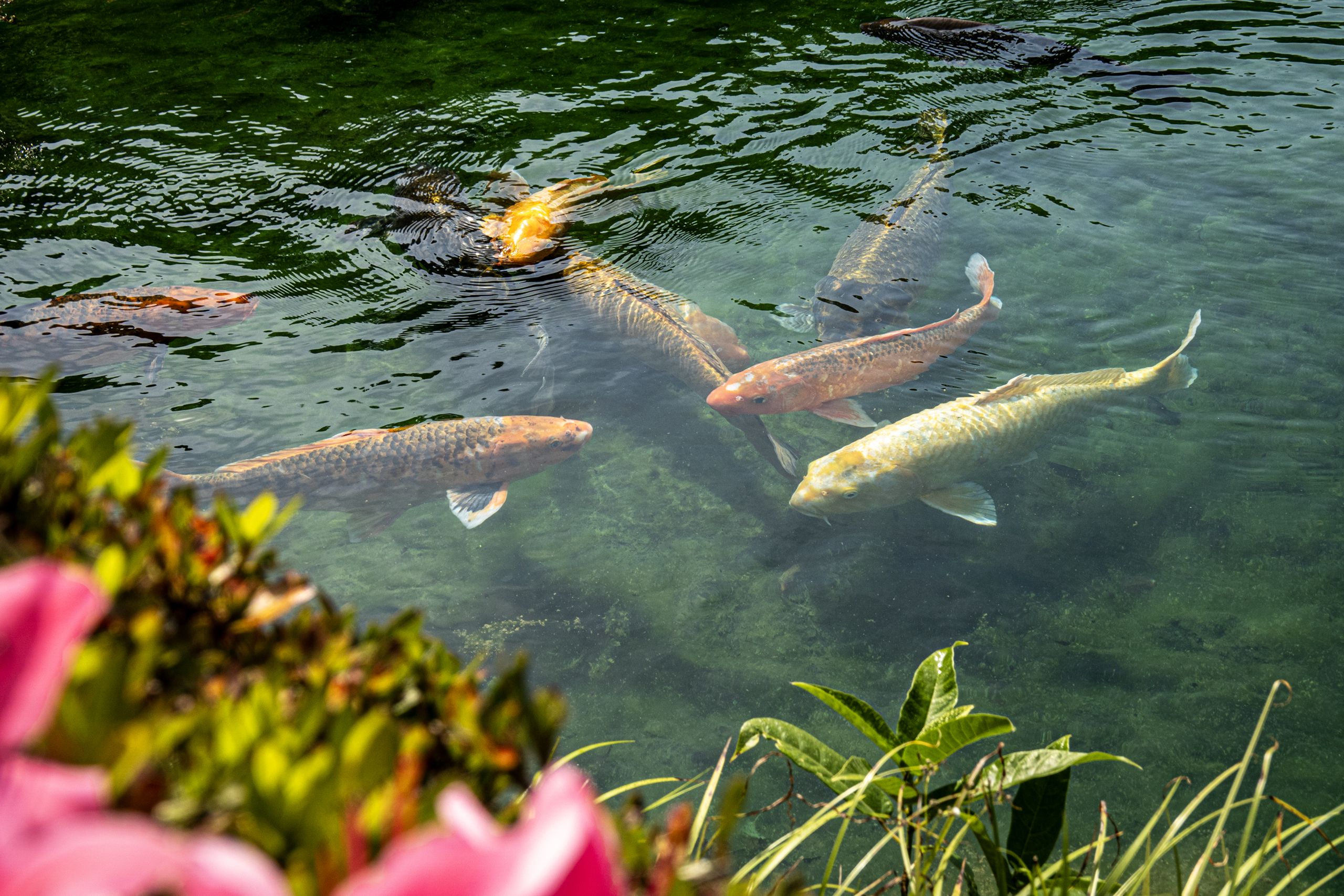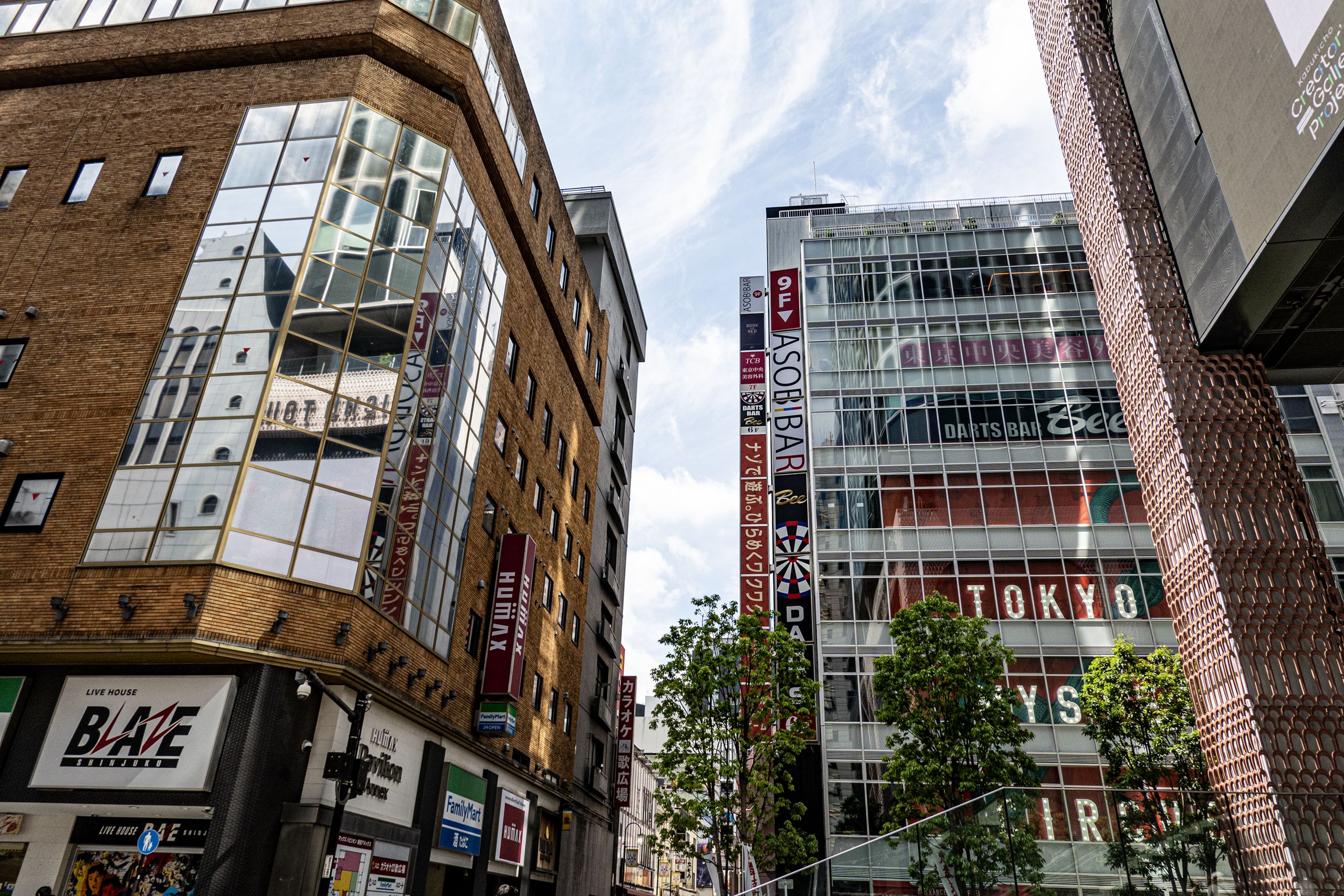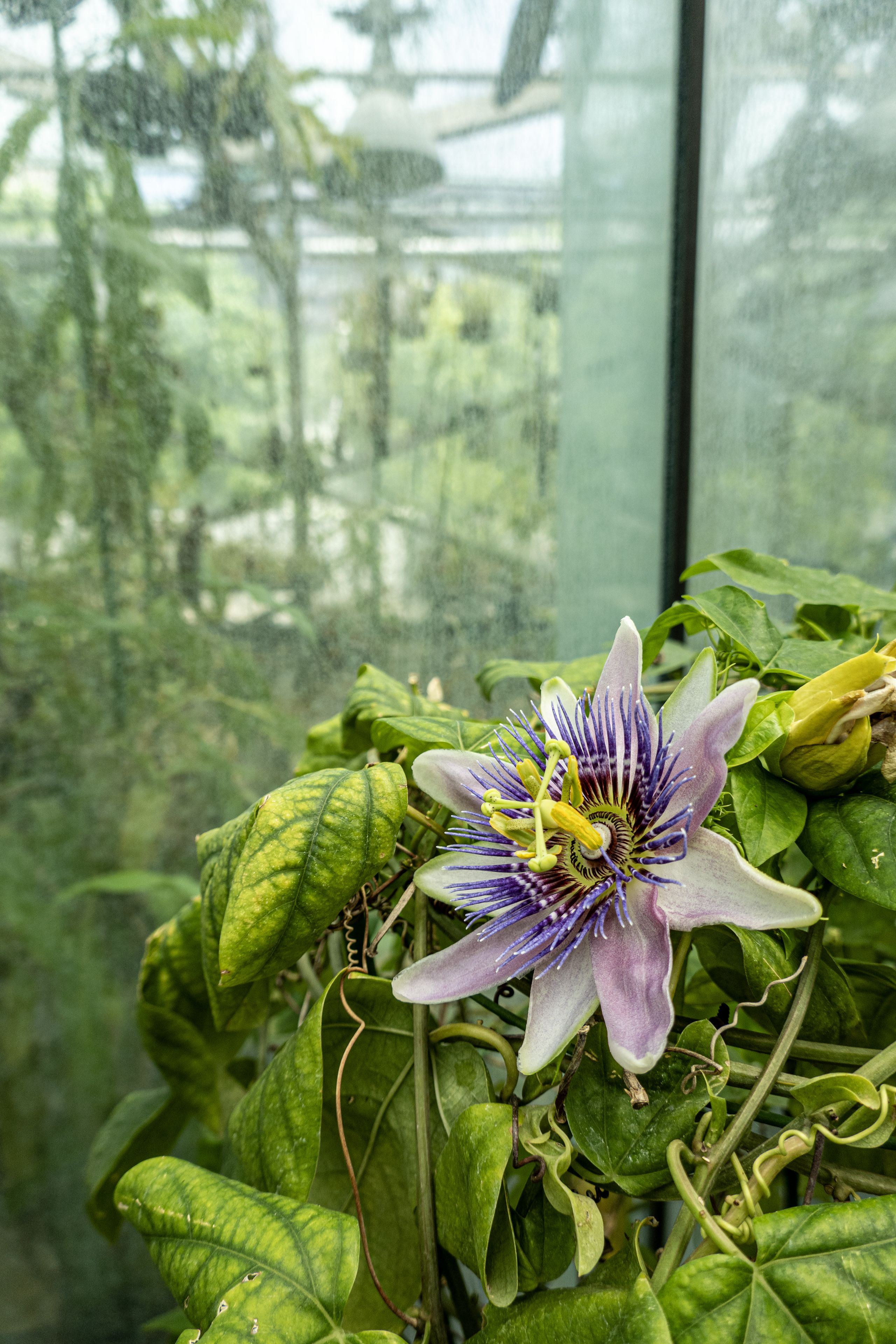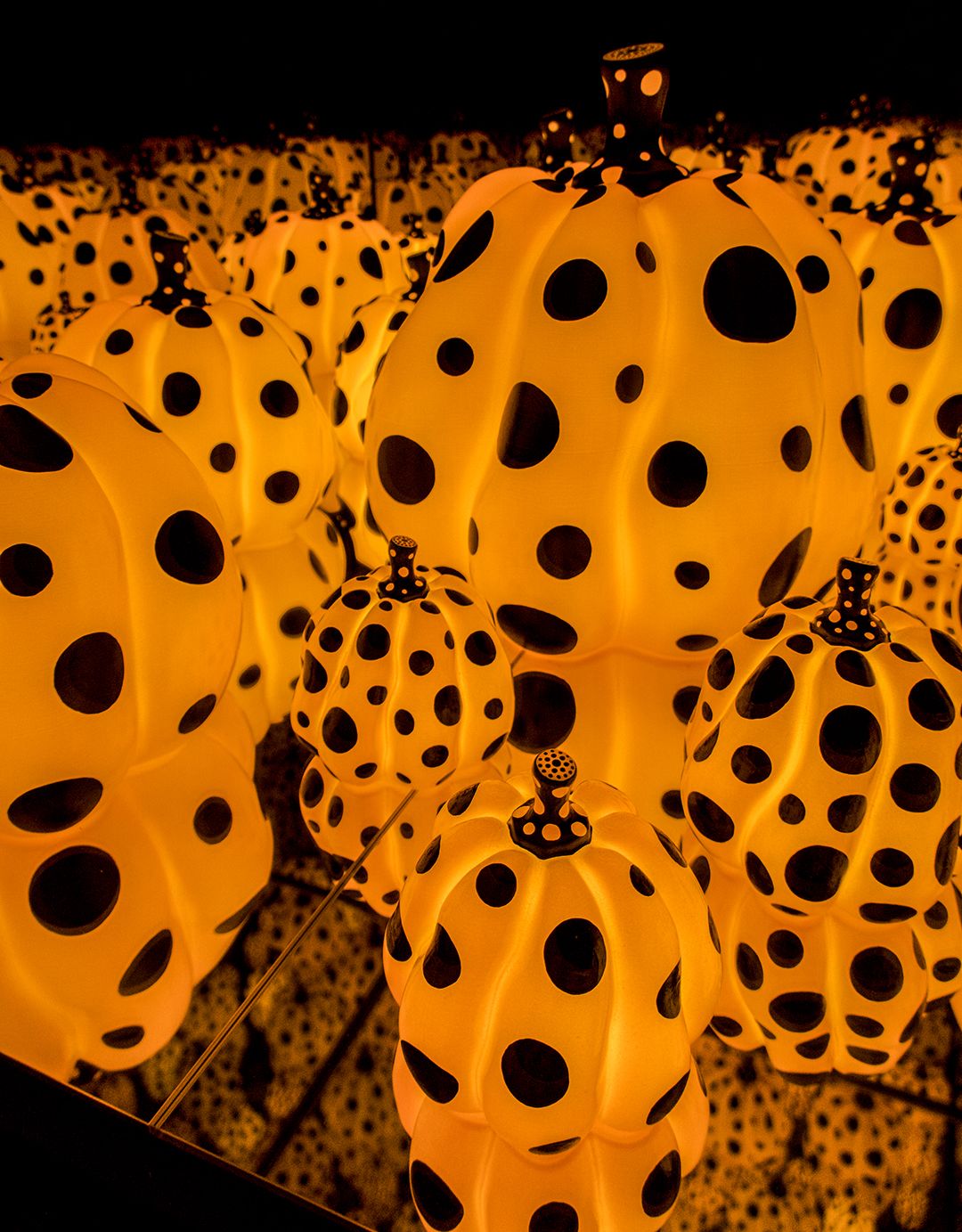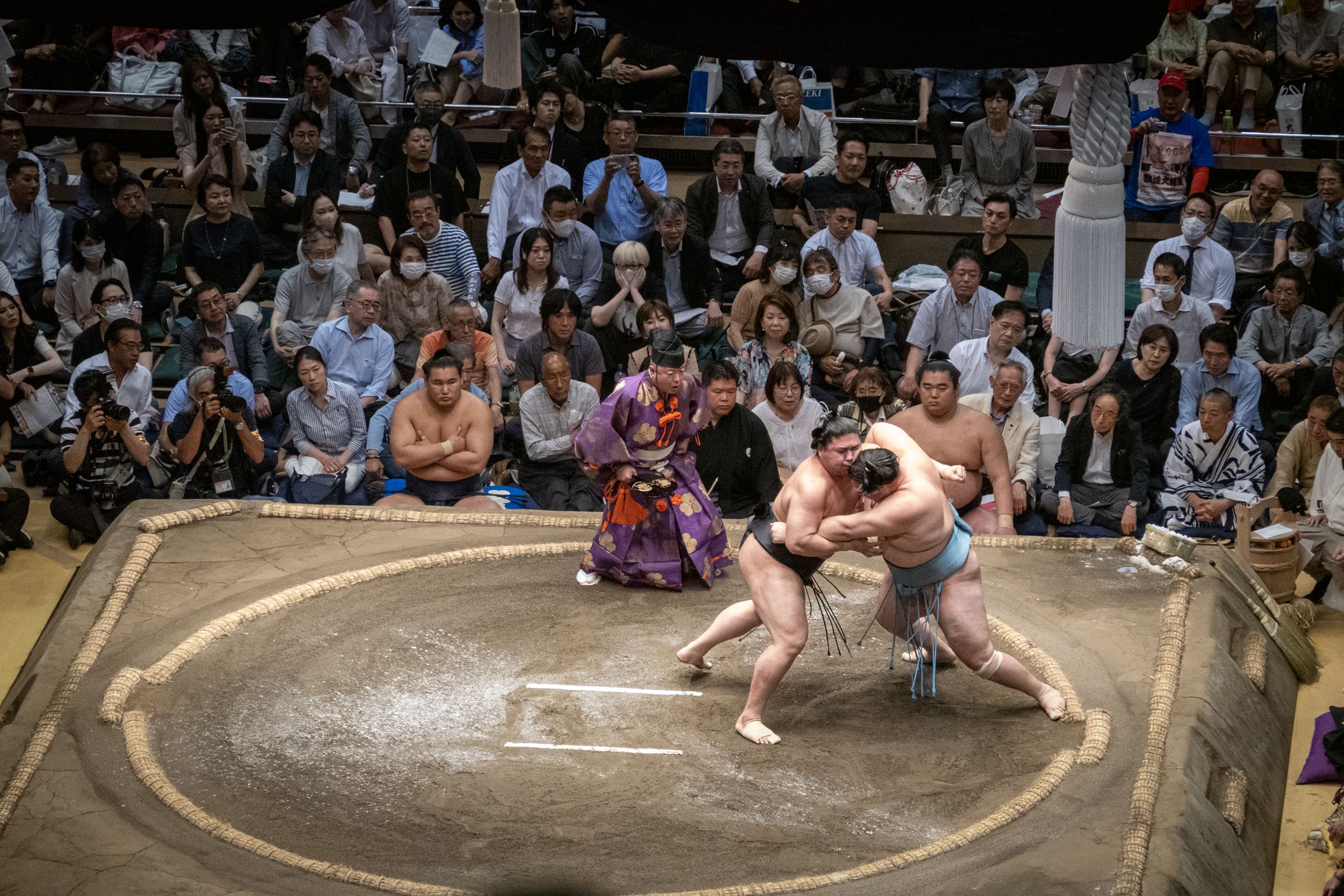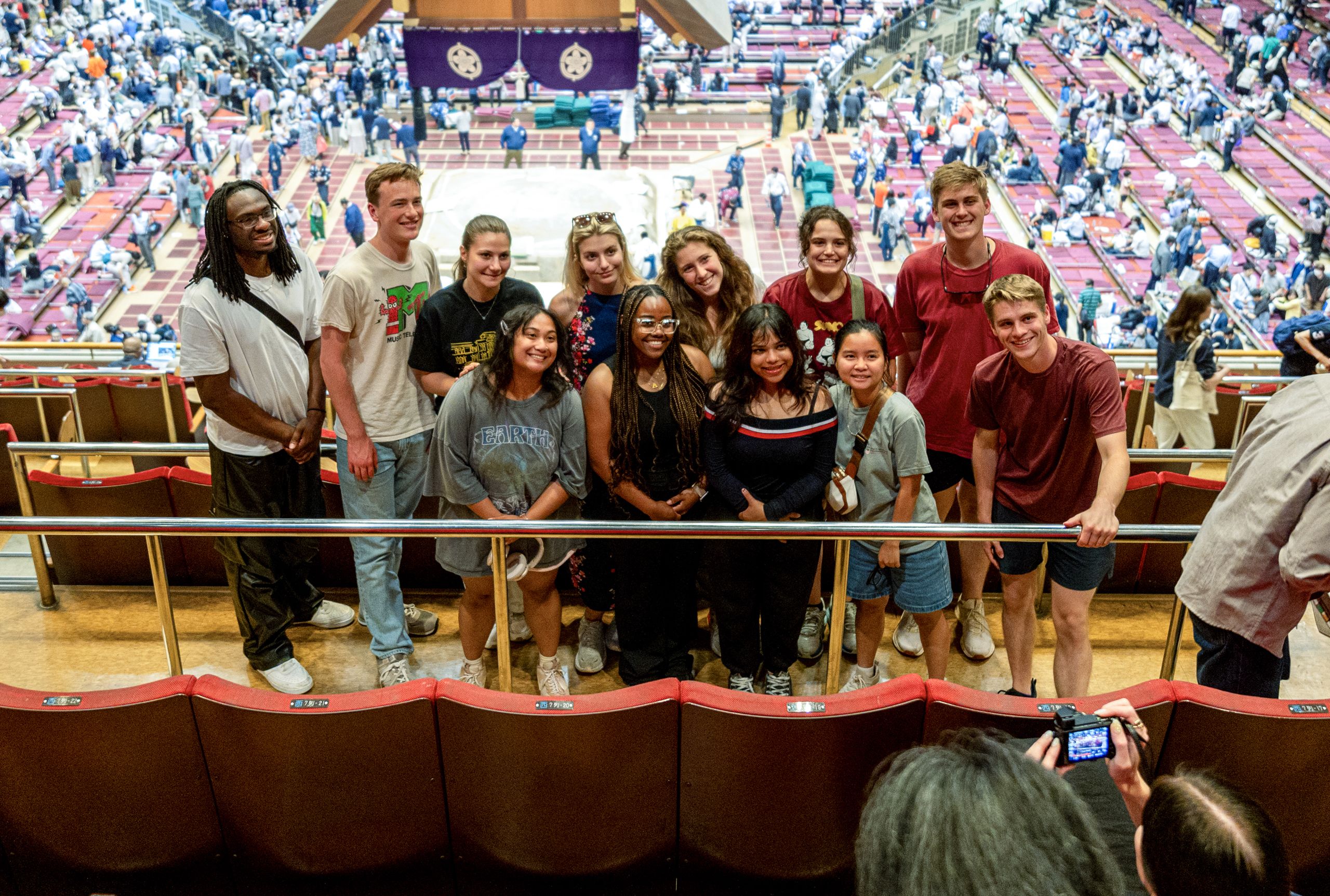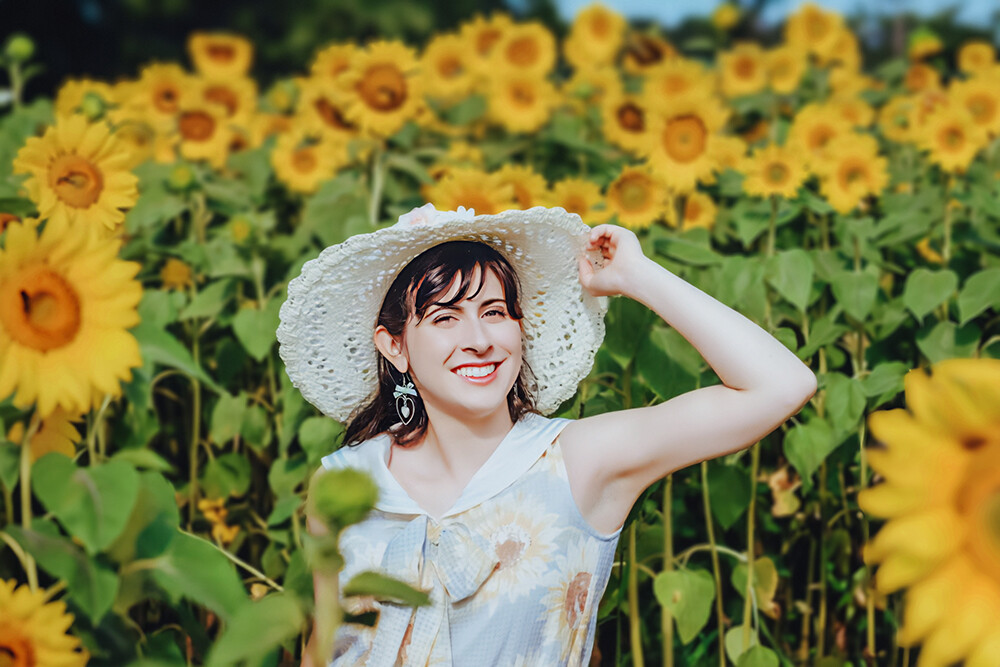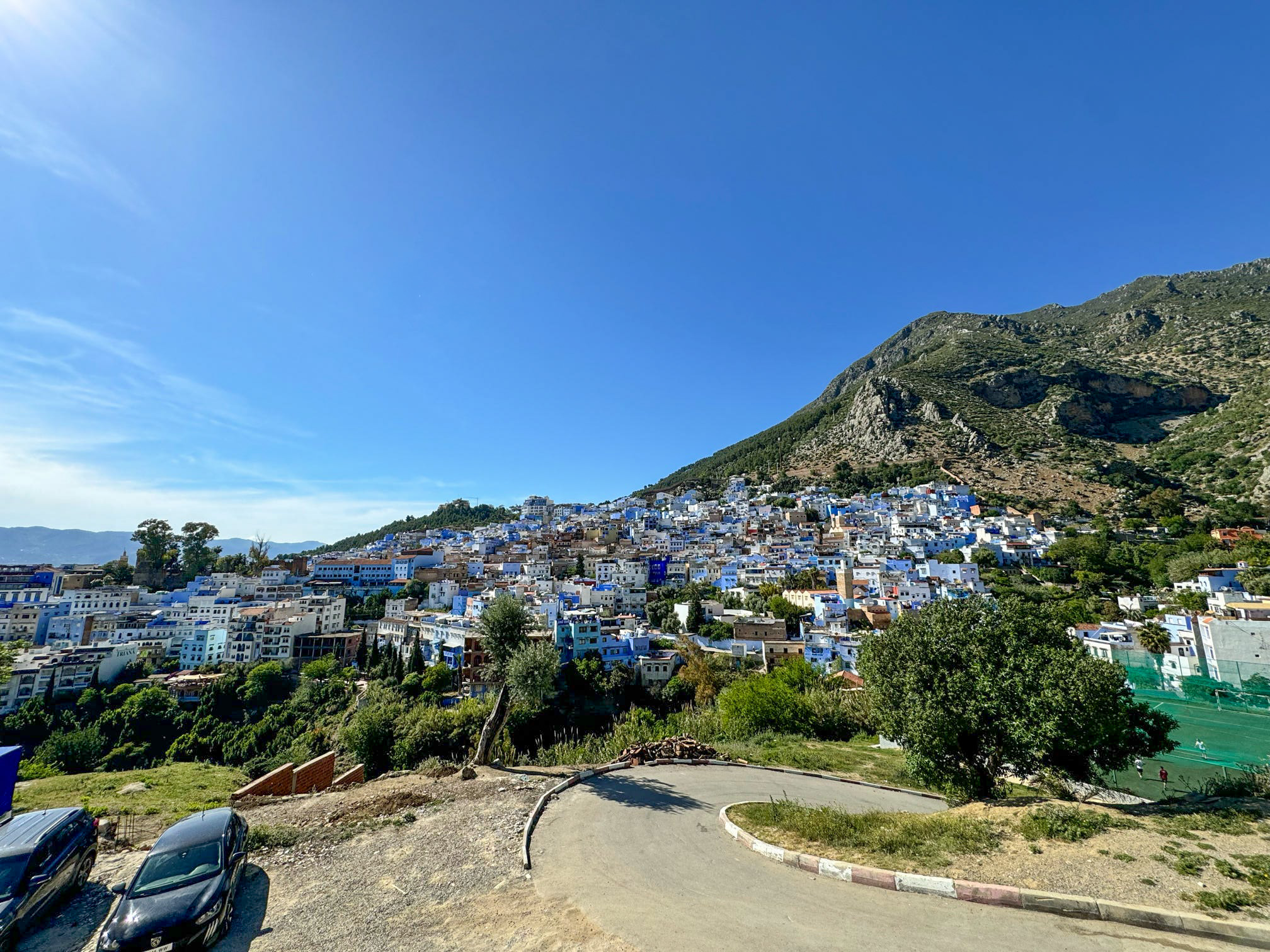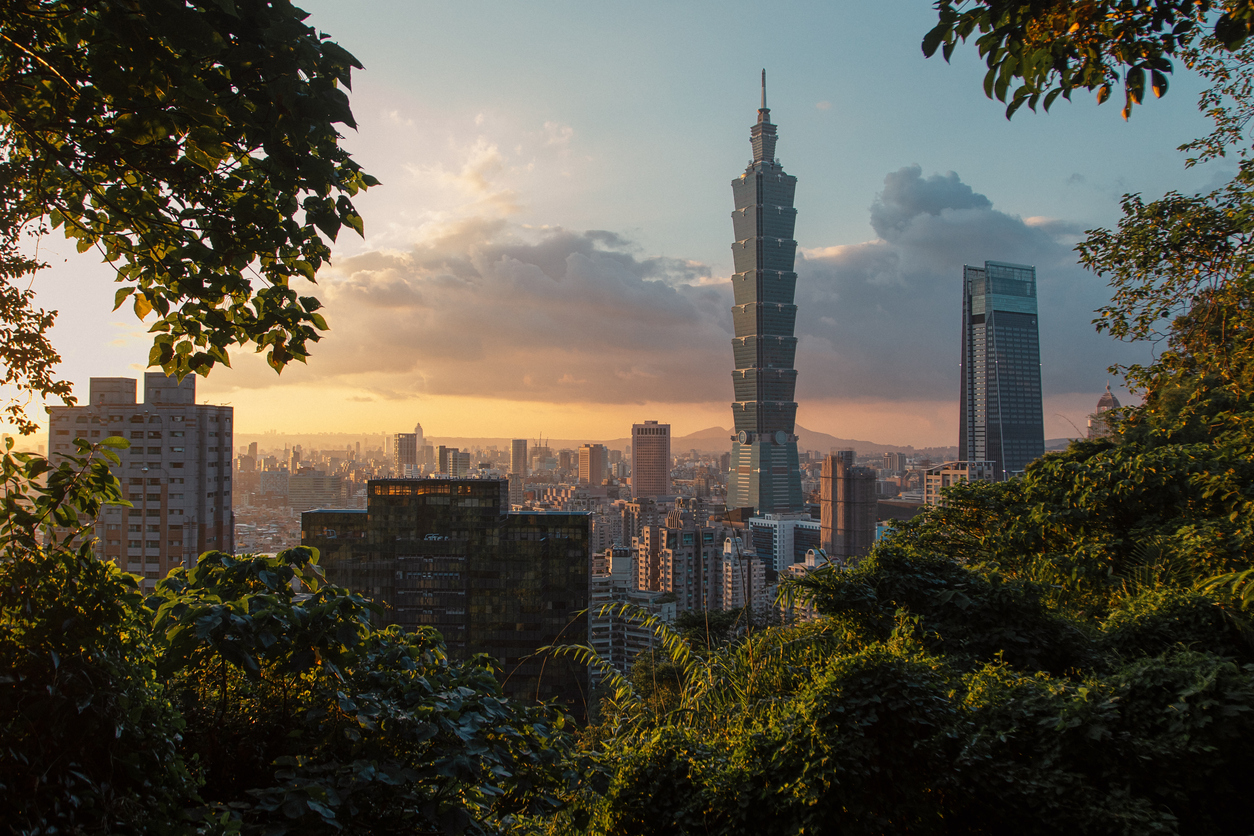



Welcome home, Bulldogs!
From Tokyo to Usa City: How UGA students discovered culture, agriculture and connection in Japan
In its first study abroad program to Japan, CAES invites students to explore the heart of a culture where ancient traditions and modern agriculture meet — and where lasting connections take root.
By Cassie Ann Kiggen
Photos by Anthony Barkdoll and Erin Yates
Videography by Anthony Barkdoll
A bullet train glides through the Japanese countryside, carrying University of Georgia students past terraced, emerald-green rice fields called "tanada," which give way to Tokyo’s modern skyline rising from the land.
The students are the first to experience a new study abroad program from the College of Agricultural and Environmental Sciences that explores Japan’s food, culture and environment. Led by Department of Animal and Dairy Science faculty members John Gonzalez and Kari Turner, the program introduces students to the deep-rooted agricultural traditions of a country that balances history with innovation.
Gonzalez has worked closely with Kyushu University for years, welcoming their students to Georgia for research internships in his lab. He also teaches a summer course that helps Kyushu students develop scientific manuscripts for peer review. With future plans for UGA students to study at Kyushu, the ongoing exchange inspired Gonzalez and Turner to launch the CAES Japan study abroad program.
“This trip helps students understand how one of our biggest trade partners views our production practices and why sustainability is important to their culture. It also helps them identify opportunities to do business successfully in the Japanese market,” he said.
A cultural awakening
The journey began in Tokyo, where the contrast of old and new set the tone for the experience ahead. The first stop: Tsukiji Outer Market, a bustling hub where students saw firsthand Japan’s fresh seafood, vegetables and traditional foods. Later, a visit to the U.S. Embassy facilitated an in-depth discussion on Japanese agriculture and its global trade connections, illuminating the intricate economic and policy dynamics at play.
At Tokyo’s Toyosu Market — the world’s largest wholesale fish and seafood market — students witnessed the precision and expertise of Japanese fishmongers then learned the art of sushi-making under the guidance of a master chef, quickly learning how food and hospitality are artfully woven into the fabric of Japanese life.
The following days unfolded like an intricately crafted origami tableau of Japanese culture. Carried along the rail lines that crisscross the island of Japan, the CAES cohort visited Kyoto, where the golden Kinkaku-ji Temple shimmered under the afternoon sun, and the famous Nijō Castle, where students marveled at the aesthetic of the Edo architectural period.
From Kyoto, the group traveled to Hiroshima to visit the renowned Peace Memorial Museum — a sobering reminder of resilience and renewal for Japan and the rest of the world. A quick ferry ride from Hiroshima carried the group to Itsukushima — also referred to as Miyajima or “shrine island” — home to the famous Itsukushima Shinto Shrine, with its iconic five-story pagoda and dramatic floating torii gate. Visitors from around the world travel to the shrine island to experience the splendor of the shrine and gate, which stand in the shadow of Mount Misen, the island’s highest peak.
Returning to Hiroshima, students participated in a lively traditional cooking class, preparing okonomiyaki, a savory Japanese pancake dish stuffed with meat and vegetables and cooked on a searing-hot teppan, as their laughter mingled with the tantalizing scent of sizzling batter rising from the traditional cast-iron cooking plate.
Students learn to make okonomiyaki during a cooking class in Hiroshima. (Photo by Erin Yates)
Students learn to make okonomiyaki during a cooking class in Hiroshima. (Photo by Erin Yates)
Ini tanada, or terraced rice fields, grow in Hiroshima prefecture.
Ini tanada, or terraced rice fields, grow in Hiroshima prefecture.
Local pedestrians walk down the streets of Tokyo. (Photo by Erin Yates)
Local pedestrians walk down the streets of Tokyo. (Photo by Erin Yates)
Shinjuku Gyoen National Garden comprises 144 acres of public gardens in the city of Tokyo. (Photo by Erin Yates)
Shinjuku Gyoen National Garden comprises 144 acres of public gardens in the city of Tokyo. (Photo by Erin Yates)
The A-Bomb Dome stands as a stark reminder of the atomic bombing on Aug. 6, 1945. Preserved in its post-blast condition, it is a symbol of global peace and nuclear disarmament. (Photo by Erin Yates)
The A-Bomb Dome stands as a stark reminder of the atomic bombing on Aug. 6, 1945. Preserved in its post-blast condition, it is a symbol of global peace and nuclear disarmament. (Photo by Erin Yates)



UGA and Kyushu University students are welcomed by the Usa City community and its leaders. (Photo by Erin Yates)
UGA and Kyushu University students are welcomed by the Usa City community and its leaders. (Photo by Erin Yates)
Usa City welcomes U.S. friends
Traveling south from Hiroshima by bus to Usa City in rural Ōita Prefecture, students visited a United Nations World Irrigation Heritage Site with more than 2,000 irrigation ponds. A small town compared to the larger cities on the trip, Usa City held a welcoming ceremony for the UGA cohort, with a presentation on the importance of agriculture and forestry in this rural part of Japan.
“Agriculture is a thriving industry in Usa City. In particular, the rice, wheat, soybeans and Wagyu beef industries are prominent in this area. The natural areas of farmland and our mild climate make Usa City and the surrounding area an ideal place for agriculture, and these industries have lasted for more than 1,000 years,” explained Tomoko Hidaka, who worked with Kyushu University Professor Yasuaki Hiromasa to coordinate the program with UGA.
The UGA delegation was joined by students and faculty from Kyushu University, a longtime research partner of CAES. UGA and Kyushu students, led by Hidaka and Hiromasa, explored the impressive Usa Jingū Shrine, an eighth-century shrine known for its beautiful gardens.
Cultural excursions were interspersed with academic sessions led by local agricultural specialists who explained Japanese farming systems and practices designed to recycle and reuse water within river basins and practices to optimize nutrient levels for crop growth, primarily rice cultivation.
UGA students visit a Jingu shrine in Usa City. (Photo by Anthony Barkdoll)
UGA students visit a Jingu shrine in Usa City. (Photo by Anthony Barkdoll)
Revitalizing interest in agriculture
Mirroring the decline in agricultural producers in the U.S., rural areas such as Usa City are struggling to encourage younger generations to remain in or enter the agricultural industry. Students from both universities discussed agricultural issues in Japan similar to those faced in areas of the U.S.
At Usa City’s Nishimaki Elementary School, the CAES delegation was welcomed by Usa City Mayor Shuji Korenaga, local residents and the regional taiko drum team. Explaining that “the drums are the echo to the heart of the Japanese people,” Korenaga joined the drum team on guitar for a stirring drum ceremony.
Asia Roper, an applied biotechnology major at CAES, was moved by the performance. “When the drum team first started playing, I had chills over my entire body. You could really feel the emotion,” she said.

UGA and Kyushu University students pose with their host family during an Usa City farm stay. (Photo by Asia Roper)
UGA and Kyushu University students pose with their host family during an Usa City farm stay. (Photo by Asia Roper)
An authentic on-farm experience
After the ceremony, CAES students were introduced to their host families for a unique component of the CAES Japan program. CAES students were divided into groups and assigned to local host farm families near Usa City. During their stays, students learned the custom of saying "tadaima" — “I am home” in Japanese — when entering the home, which is greeted with the response "okaeri," meaning “welcome back home.”
This immersive experience gave students a window into Japanese farm life, where they shared meals and stories that transcended language barriers.
" The highlight of my trip was the farm stay in Usa City. We spent the night together like a family," Roper recalled. "This trip gave me perspective on how important agriculture is and how special the Japanese culture is."
Students visited a Wagyu beef farm in Fukuoka. (Photo by Erin Yates)
Students visited a Wagyu beef farm in Fukuoka. (Photo by Erin Yates)
Insights into Japan’s beef market
Traveling from the countryside to the coast, the delegation next arrived in the oceanside metropolis of Fukuoka, where they were given an in-depth look at the Wagyu beef industry from both a business perspective and through a tour of a Wagyu cattle farm.
On the farm, the students donned blue personal protective suits to walk alongside the cattle and feed calves while learning about the rigorous, hands-on care given to Wagyu beef cattle to meet Japan’s strict beef grading system and marbling scores — standards that place Wagyu beef at the pinnacle of the global beef industry.
A visit to the renowned Washugyu Beef company in Fukuoka gave students an agribusiness perspective on Japan’s beef industry. The company uses a combination of Japanese production practices and a customized program to select superior genetic traits in high-quality American Black Angus cattle, which are crossbreed with Japanese beef cattle. Students learned about the company’s “farm to fork” method — from breeding in Japan to production in Oregon to global sales and distribution.


During their stays, students learned the custom of saying "tadaima" — “I am home” in Japanese — when entering the home, which is greeted with the response "okaeri," meaning “welcome back home.”
A long-term academic partnership
Fukuoka is also home to Kyushu University, which has been a valued academic partner with CAES for more than two decades. This partnership, initiated by a visiting delegation from Kyushu to UGA in 2000 and formalized in 2002, has fostered academic collaboration and student exchanges, including a 2024 visit by Kyushu University agricultural students to the UGA Athens campus to explore CAES research in food science and technology and animal and dairy sciences.
At Kyushu University, CAES students explored cutting-edge research in livestock production and sustainable agriculture with Hiromasa. In the university’s Itorito dining hall, CAES and Kyushu students exchanged ideas, discovering a universal passion for innovation and sustainability.
“There is so much room for innovation in agriculture; there are ancient Japanese practices that American farmers now use. Similarly, the Japanese are now importing American agricultural innovation to solve their issues with production,” said CAES biological science major Elizabeth Ziabtchenko, calling the experience “a full-circle moment in which we got to learn about their lives and even discuss their dreams and aspirations in agriculture.”
The roots of UGA’s relationship with Japan stretch back to 1966, when Georgia and Kagoshima Prefecture — home to Kagoshima University — became sister states. The connection deepened in 1979 with UGA’s first cooperative agreement with an international university, establishing a lasting exchange between UGA and Kagoshima University. Renewed in 2024, the ongoing academic exchange has revitalized the enduring partnership between UGA and Japan.
Hiroko Kita, an associate professor at Kyushu University, said the exchange program will have lasting benefits for all of the students involved.
“The program provided both UGA and Kyushu students with valuable opportunities for intercultural exchange and practical English conversation, enhancing their language skills and critical thinking,” Kita said.




Leaving the Land of the Rising Sun
As the trip concluded back in Tokyo, the CAES delegation gathered for a final meal — a feast of "yakitori," a traditional dish of grilled meat on skewers — on one of the capital city’s bustling side streets. Reflecting on the completion of the first CAES study abroad trip to Japan, Gonzalez and Turner thanked students for their authentic curiosity, support for one another, and openness to learning about global agricultural practices.
“We were especially excited to immerse our UGA students in the beauty of Japan’s countryside, the Japanese culture, and also teach them about Japan’s unique agricultural practices so they can take that experience back to Georgia and use what they learned to enhance their careers,” Gonzalez said.
The students shared a newfound appreciation for Japanese agriculture, for friendships forged, and for a broader perspective that will shape their future careers in agricultural and environmental sciences.
“From our time at the U.S. Embassy in Tokyo to the Wagyu beef business in Fukuoka, I was exposed to careers abroad that I had never considered. I realized I was limiting myself by only thinking about research and development and the research lab,” Ziabtchenko said. "Seeing Japan’s high-quality standards for their food, the interconnectedness of the global food system, and the Japanese food production process firsthand has changed my perspective on how food systems should work. Now I can be part of that next generation.”
As the plane lifted off from Haneda Airport, Japan’s landscapes fading beneath the clouds, the students returned to Georgia not only with memories, but with a deeper understanding of the world and their place in it.
“The personal and diverse nature of the trip makes it special. Students not only get to experience the mega-city modern culture of Tokyo and Kyoto but also the traditional Japanese culture of the small farming community in Usa City,” Gonzalez said. “Our students gained a better understanding of how different cultures view our country and its role in food production, trade and technology exchange.”
As the CAES students cultivate their own paths in agriculture and life, the lessons of Japan will remain. And if they return to Japan one day, the country will be ready to welcome them back with a familiar “okaeri.”
Locals walk down the street in Shinjuku City, Tokyo. (Photo by Erin Yates)
Locals walk down the street in Shinjuku City, Tokyo. (Photo by Erin Yates)
Students gathered with other spectators for a day of sumo wrestling in Tokyo. (Photo by Anthony Barkdoll)
Students gathered with other spectators for a day of sumo wrestling in Tokyo. (Photo by Anthony Barkdoll)
Students sing karaoke together in Tokyo. (Photo by Asia Roper)
Students sing karaoke together in Tokyo. (Photo by Asia Roper)
Students shop at a meat wholesaler in Fukuoka. (Photo by Erin Yates)
Students shop at a meat wholesaler in Fukuoka. (Photo by Erin Yates)
Hiroshima
Itsukushima
USa city
Fukuoka
Tokyo





